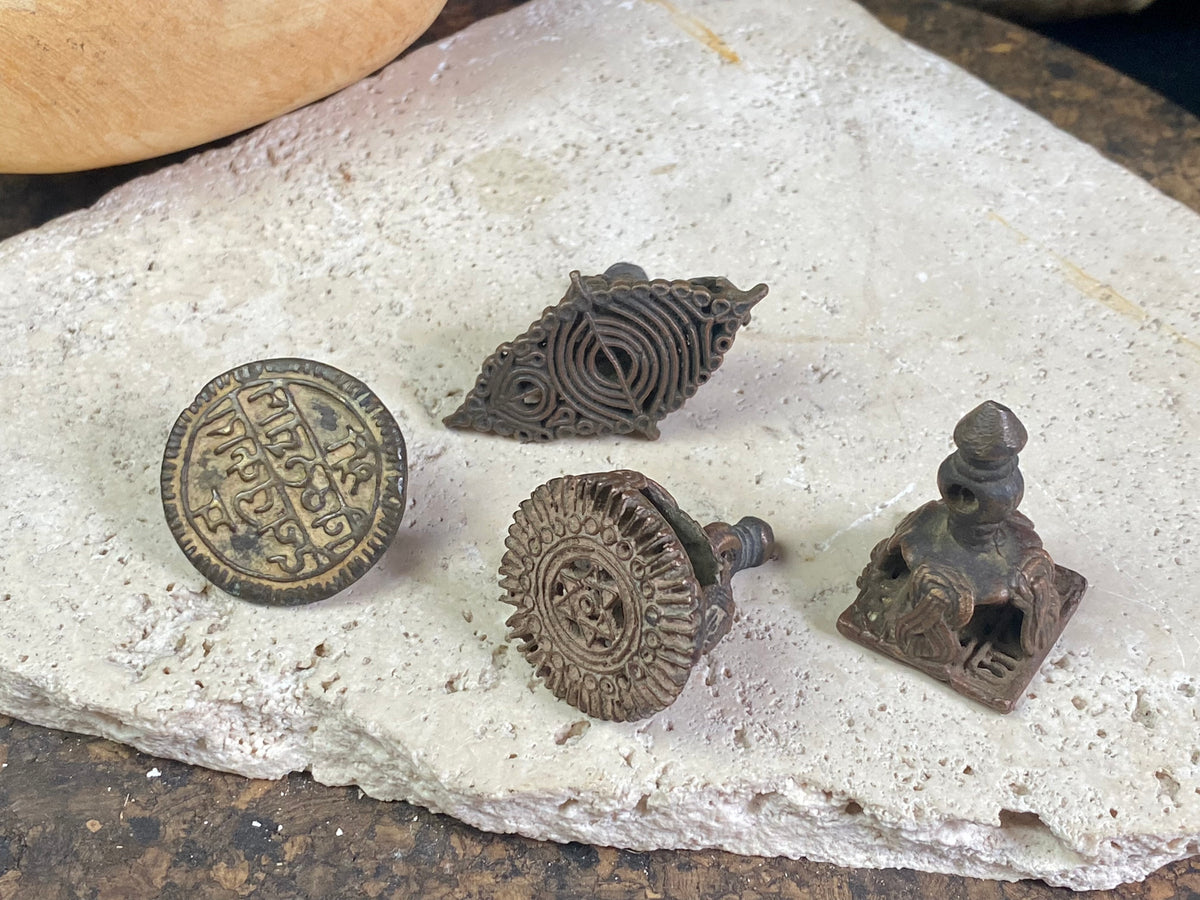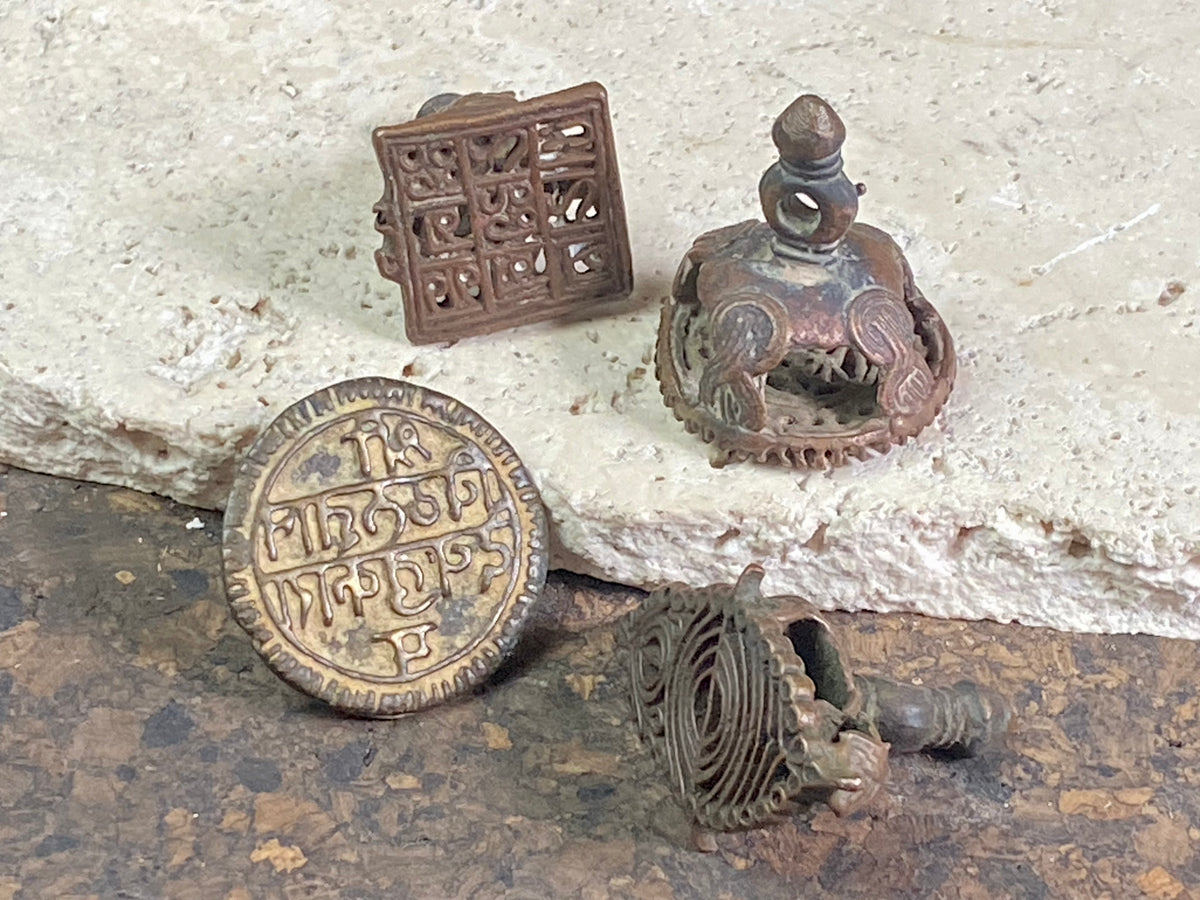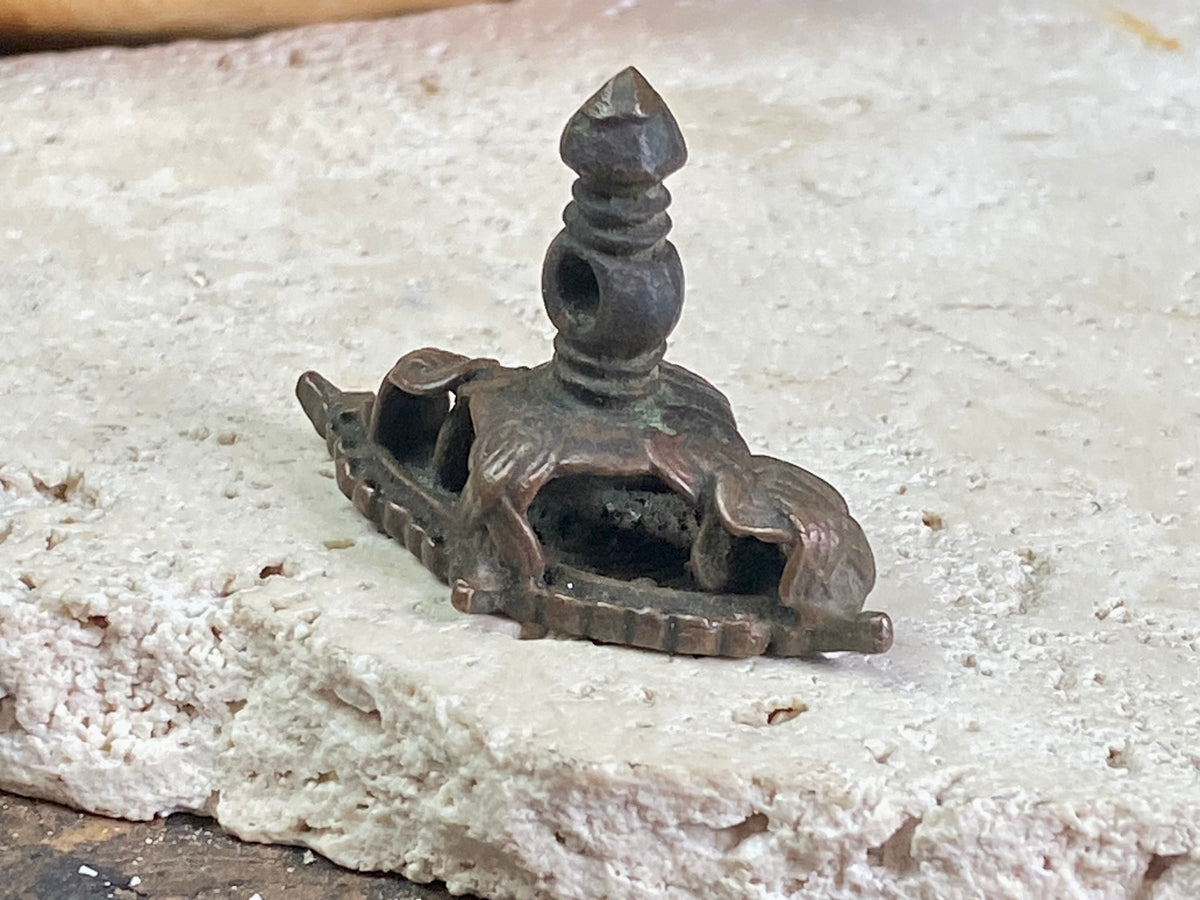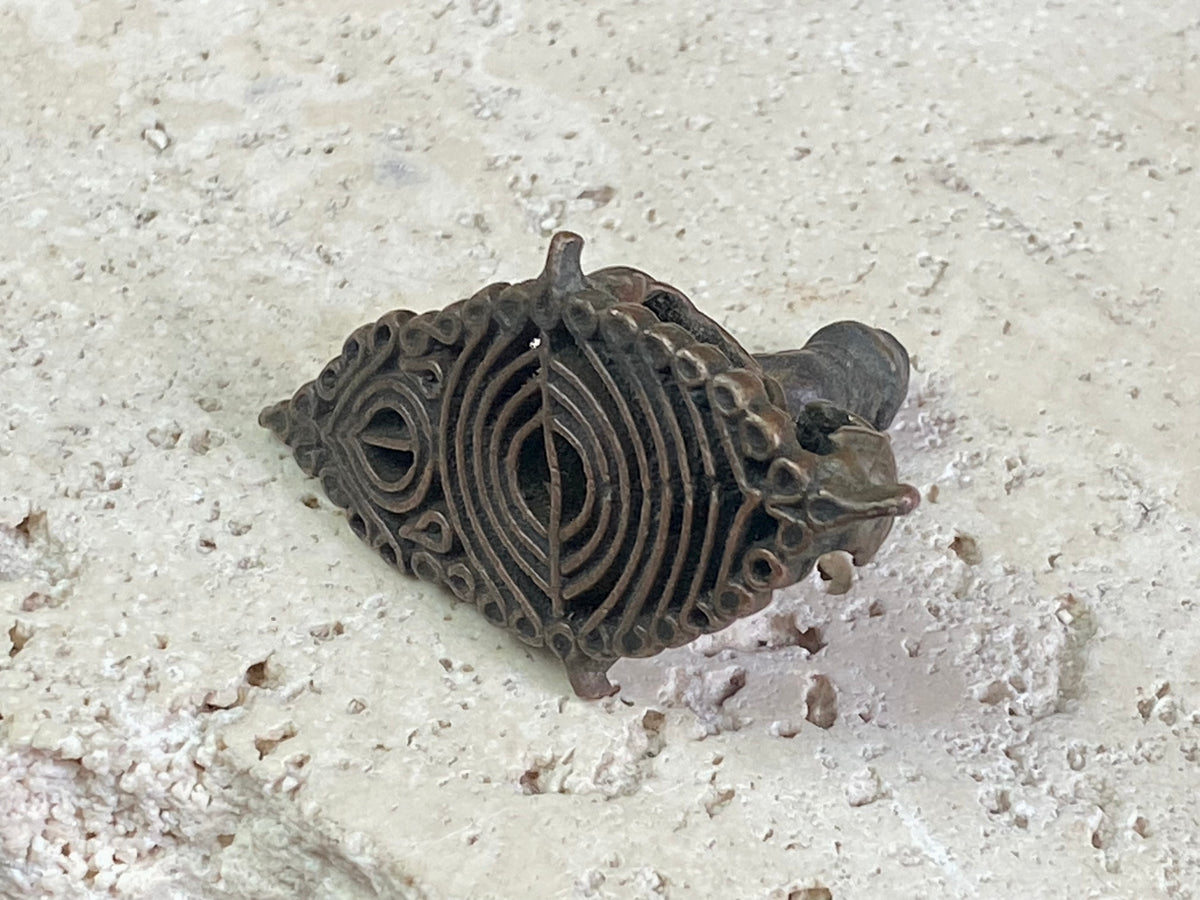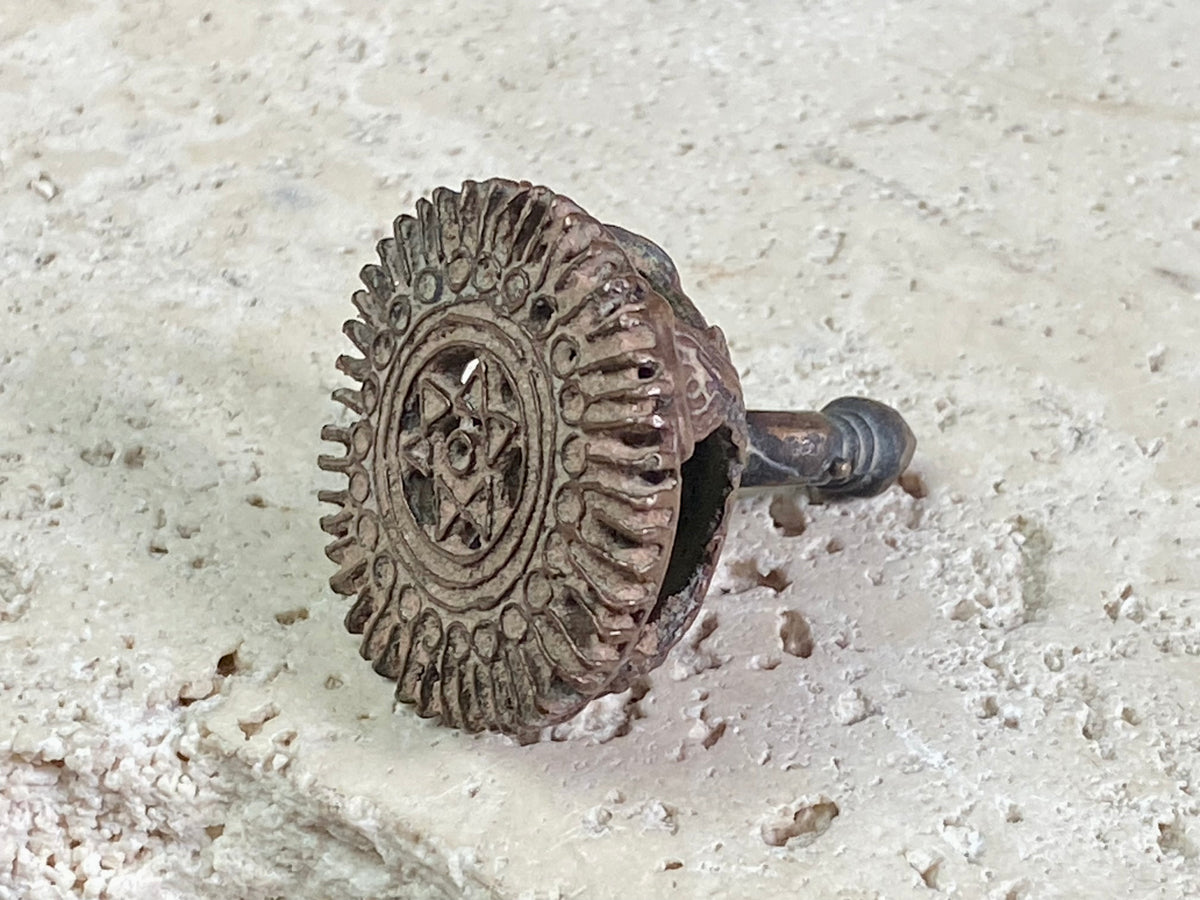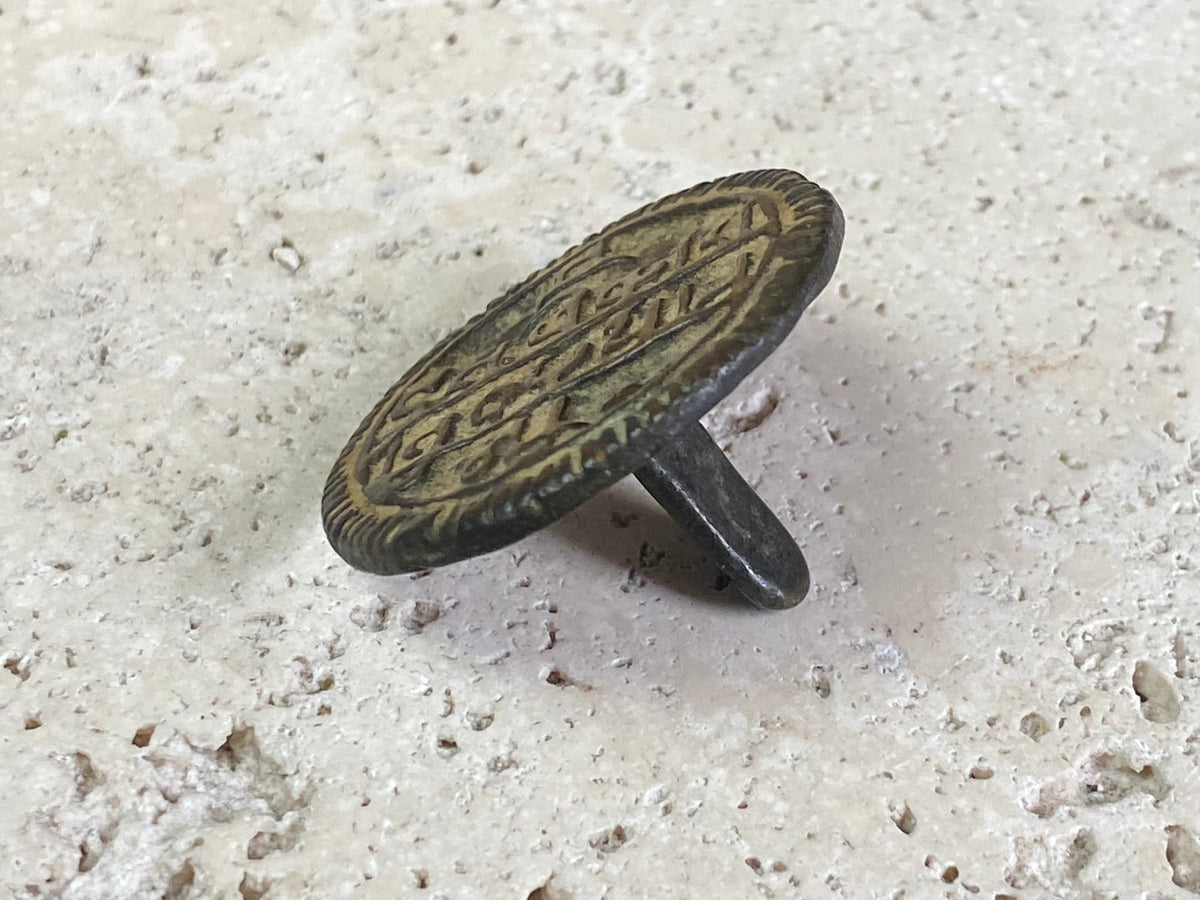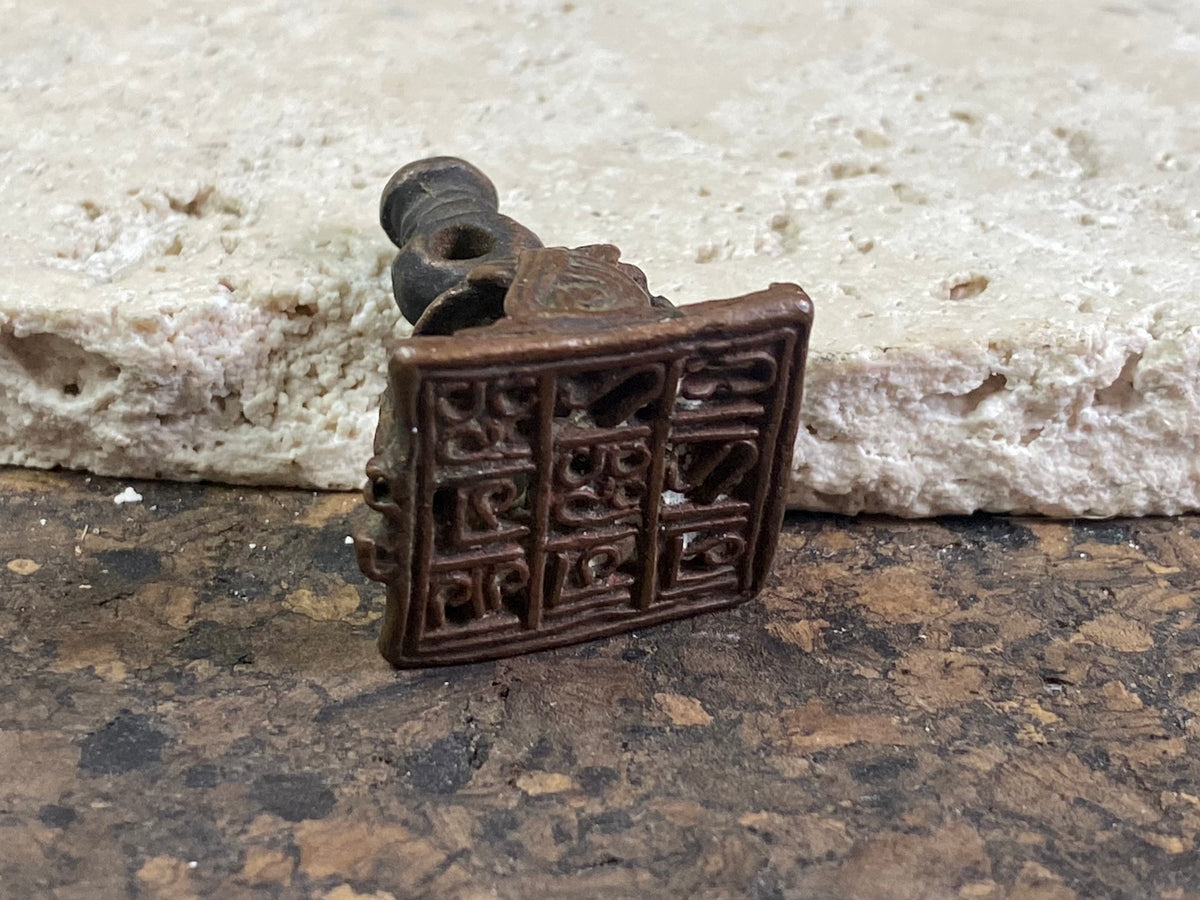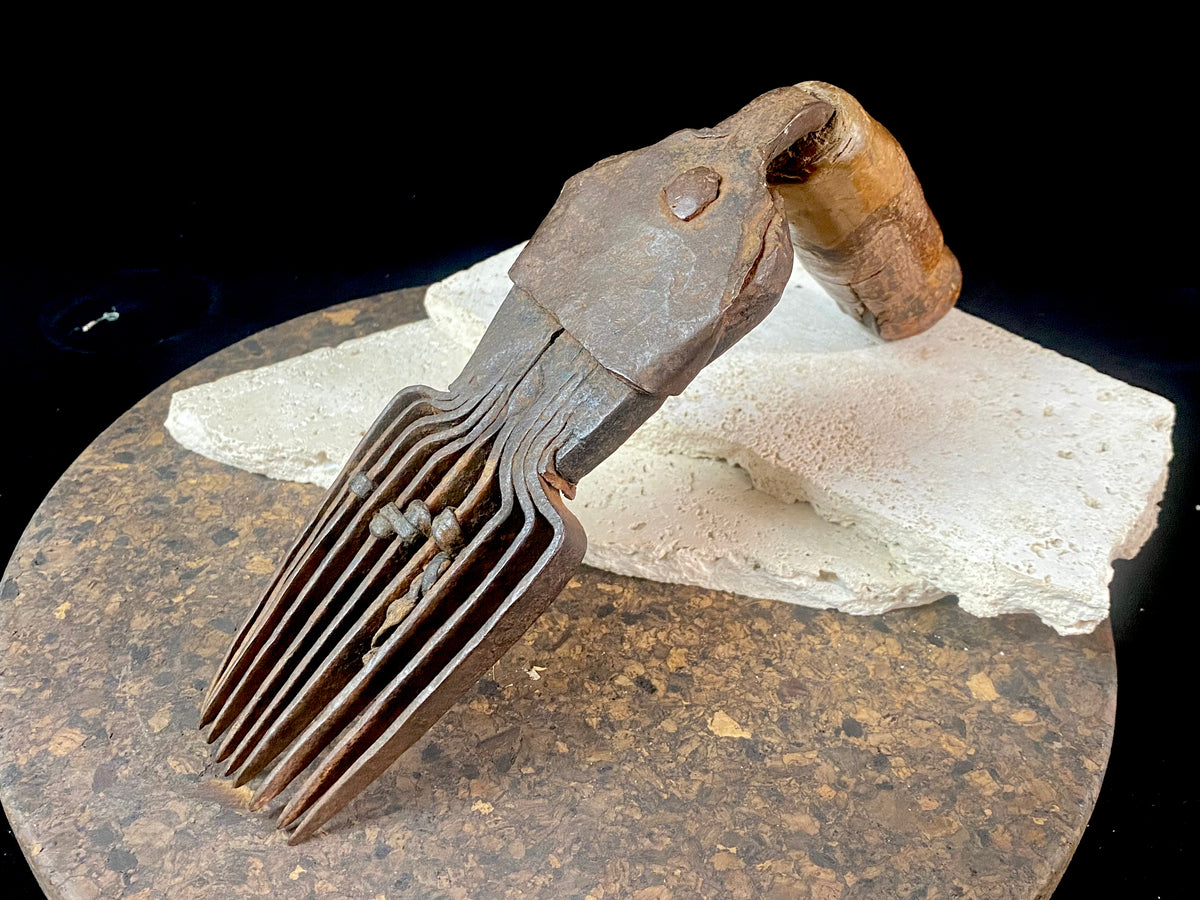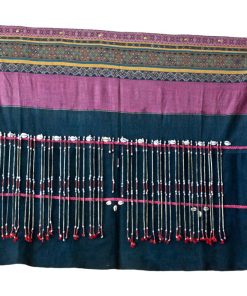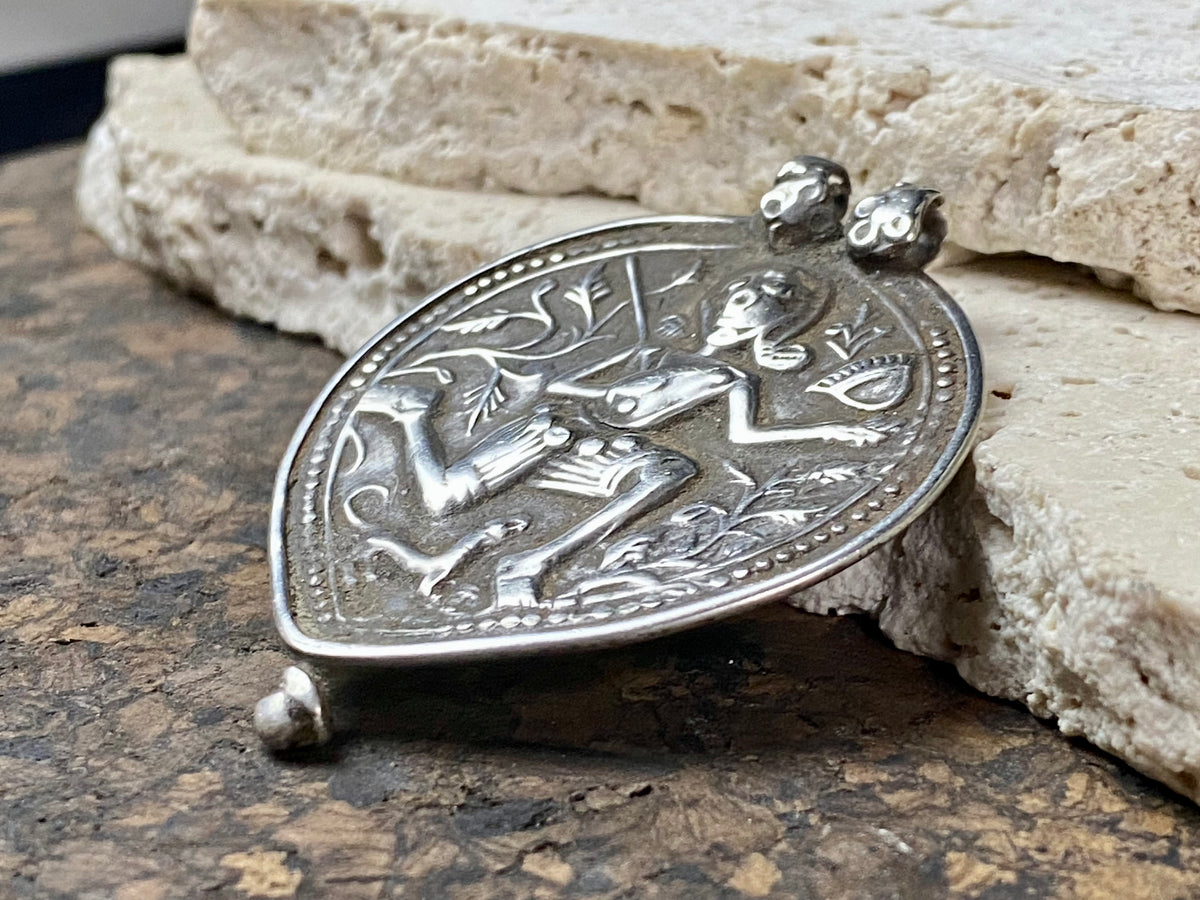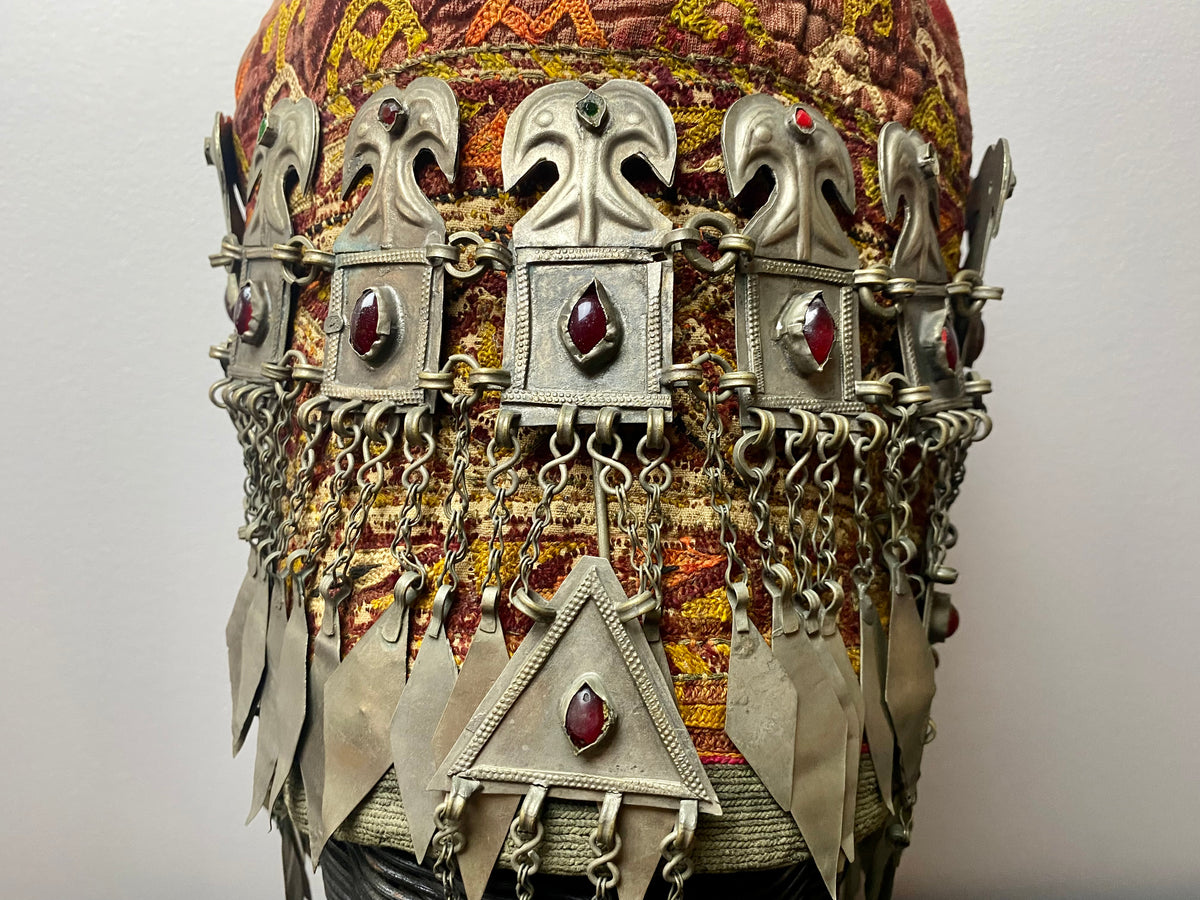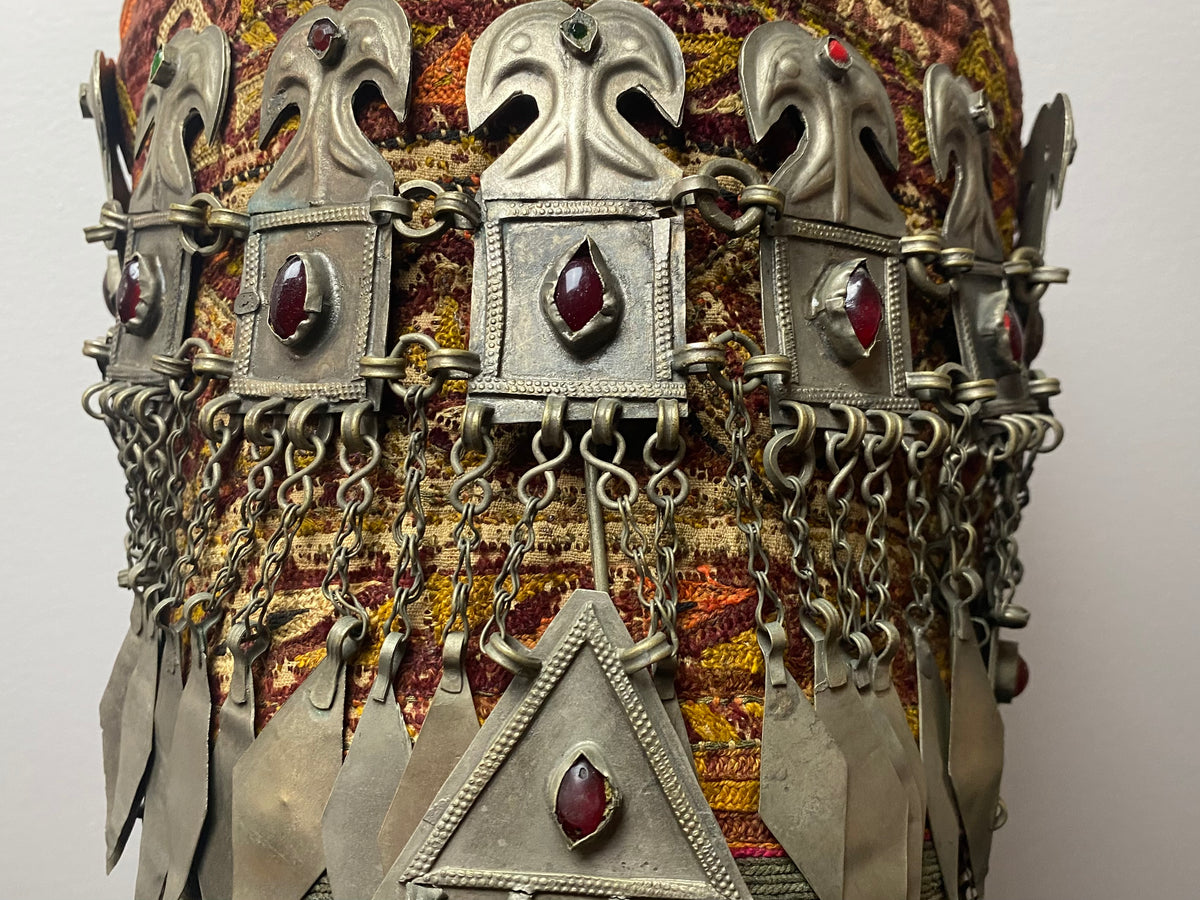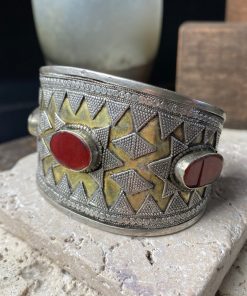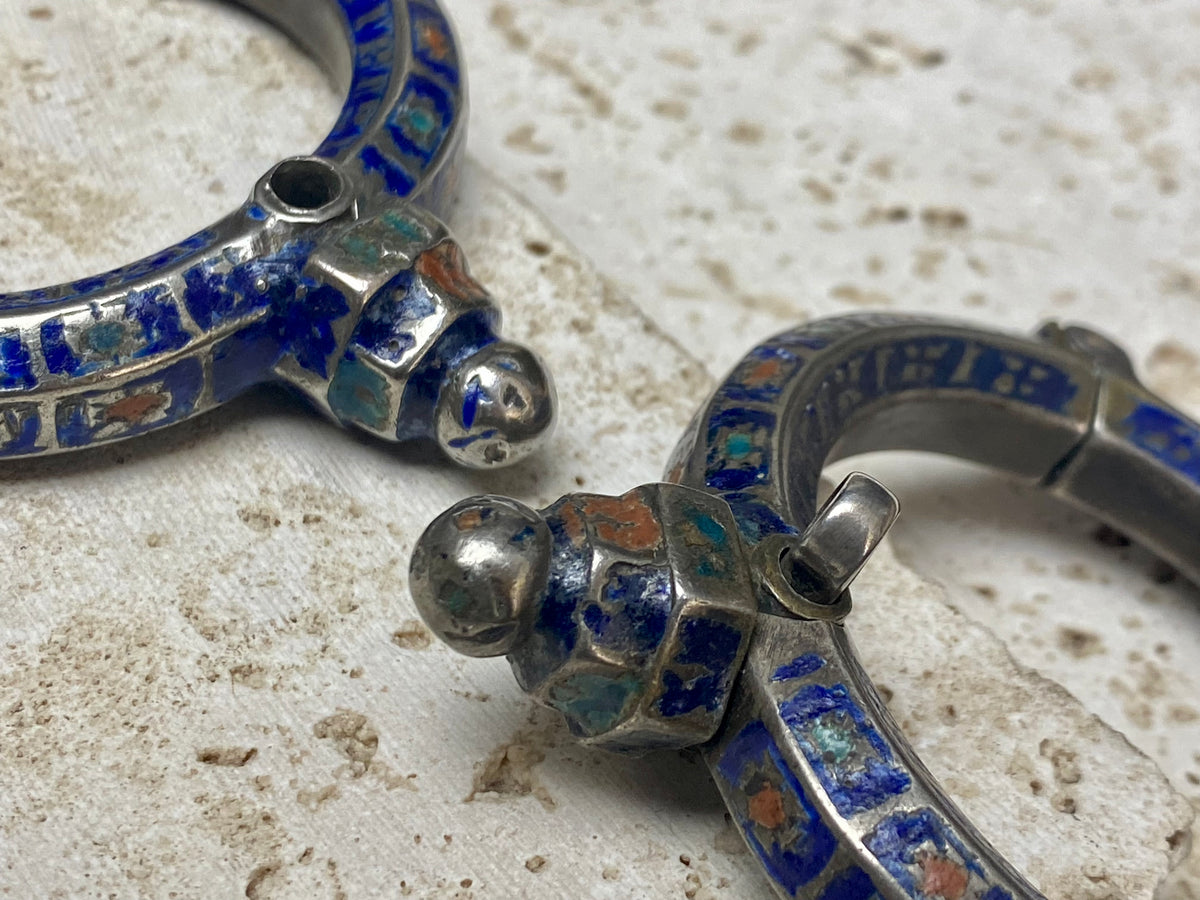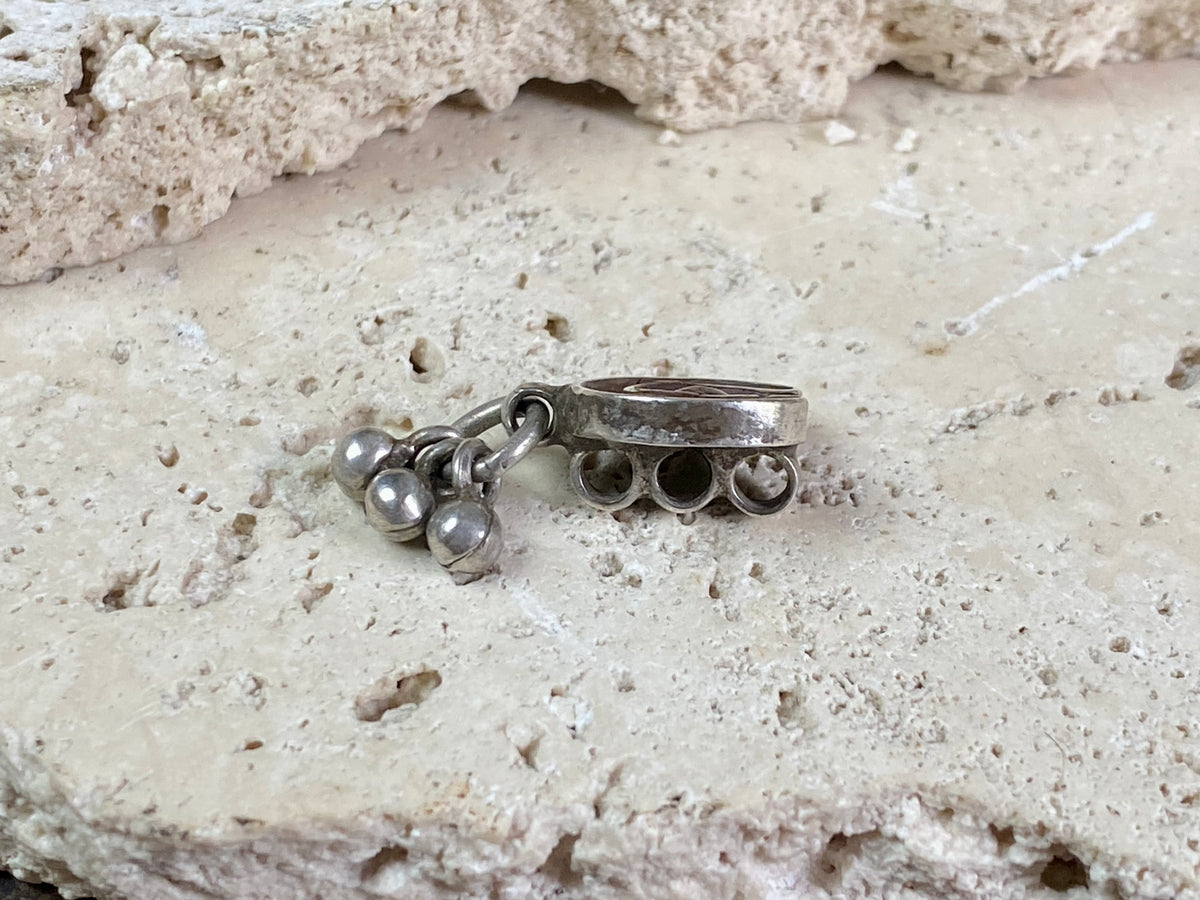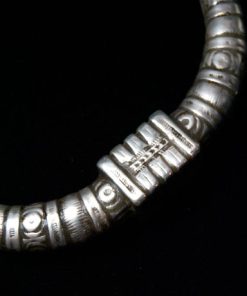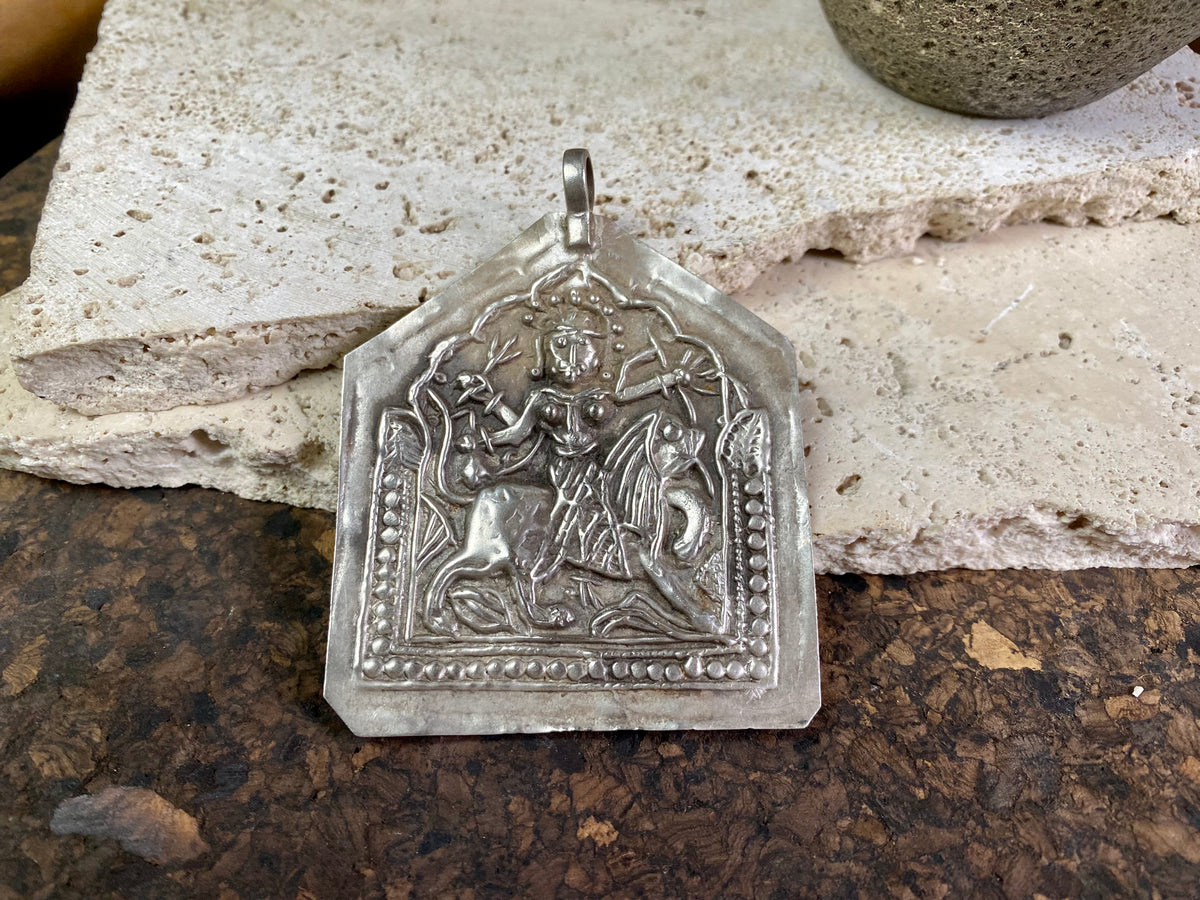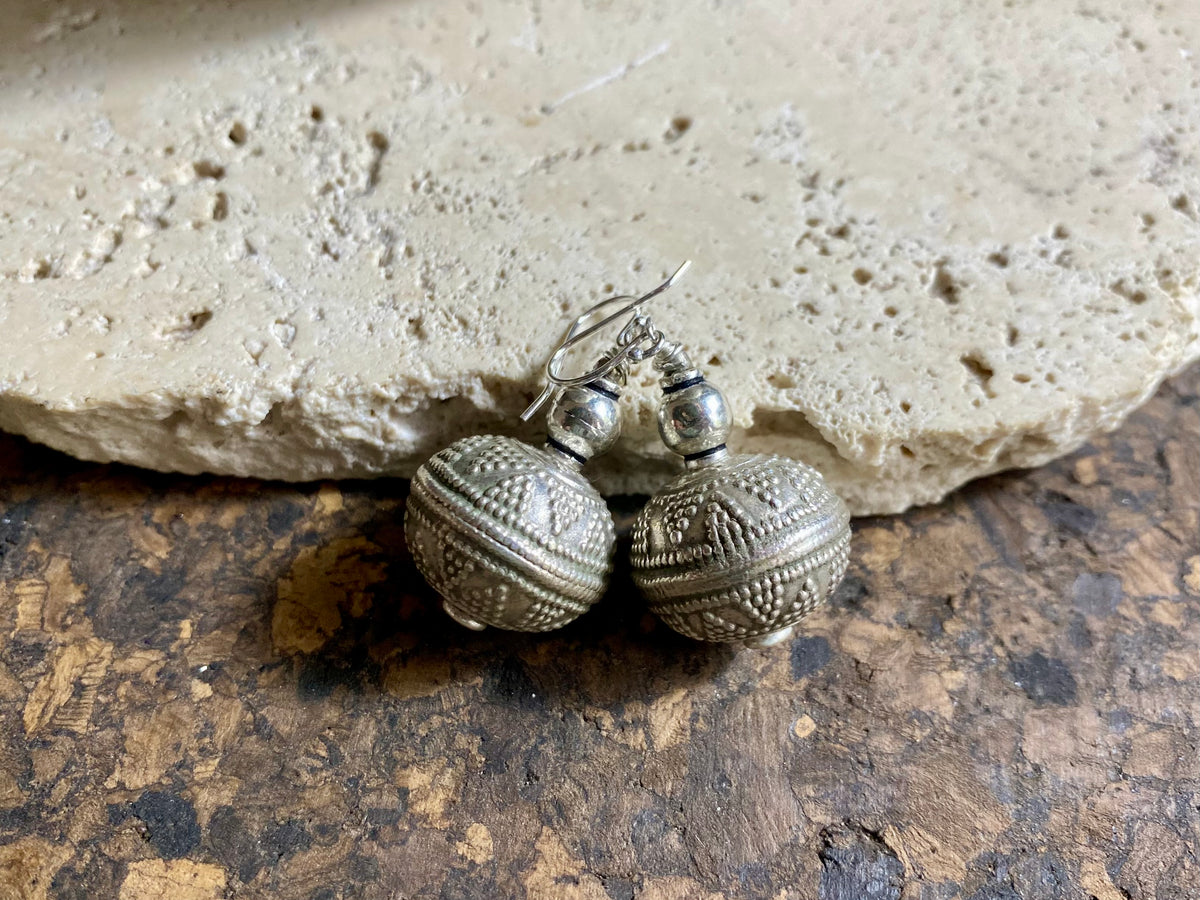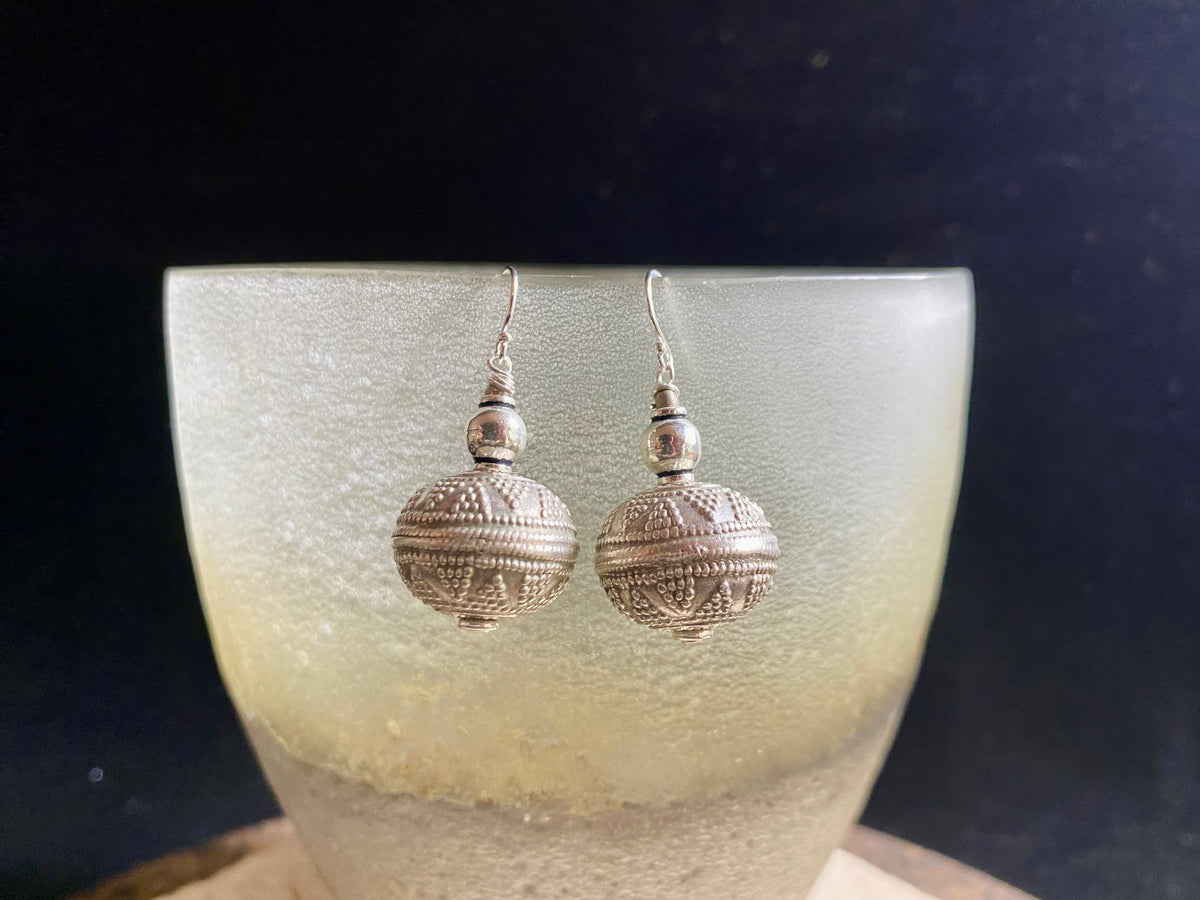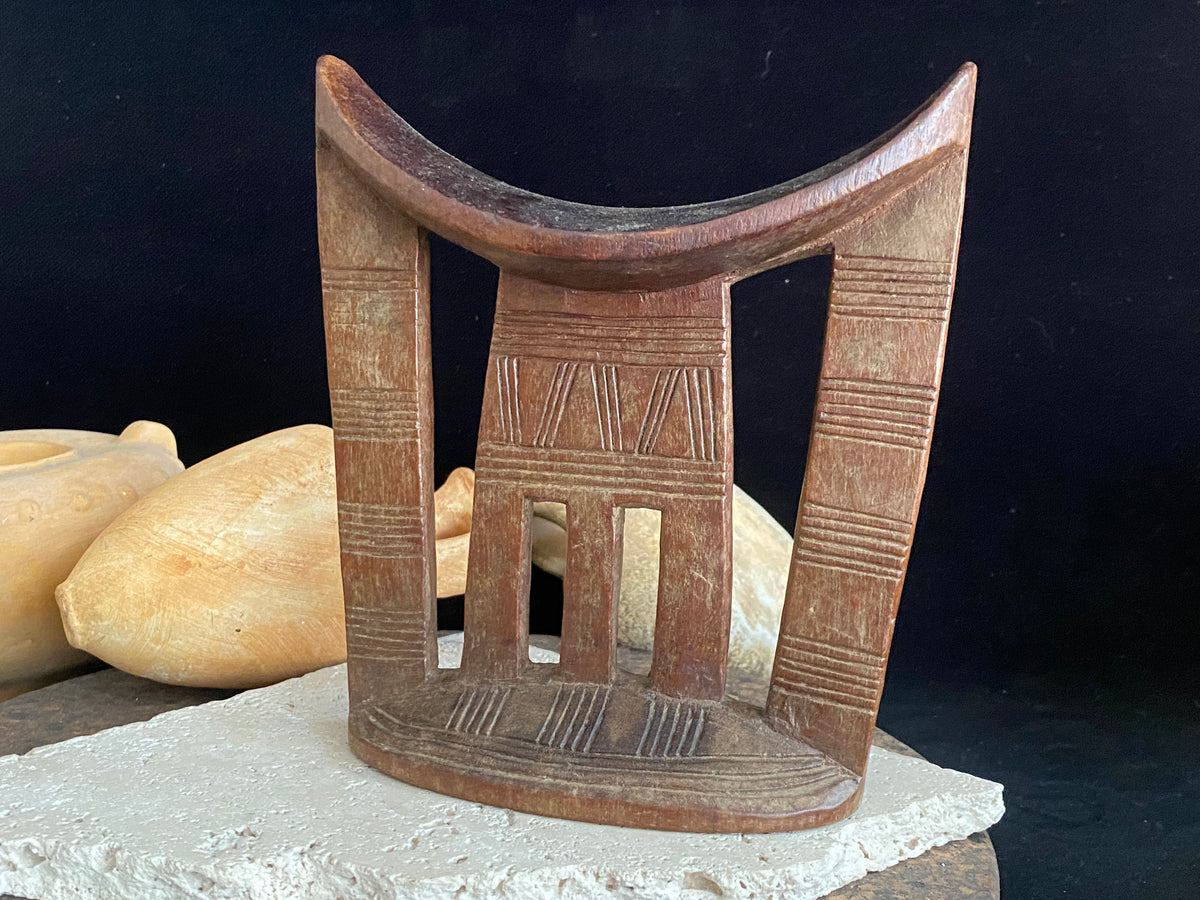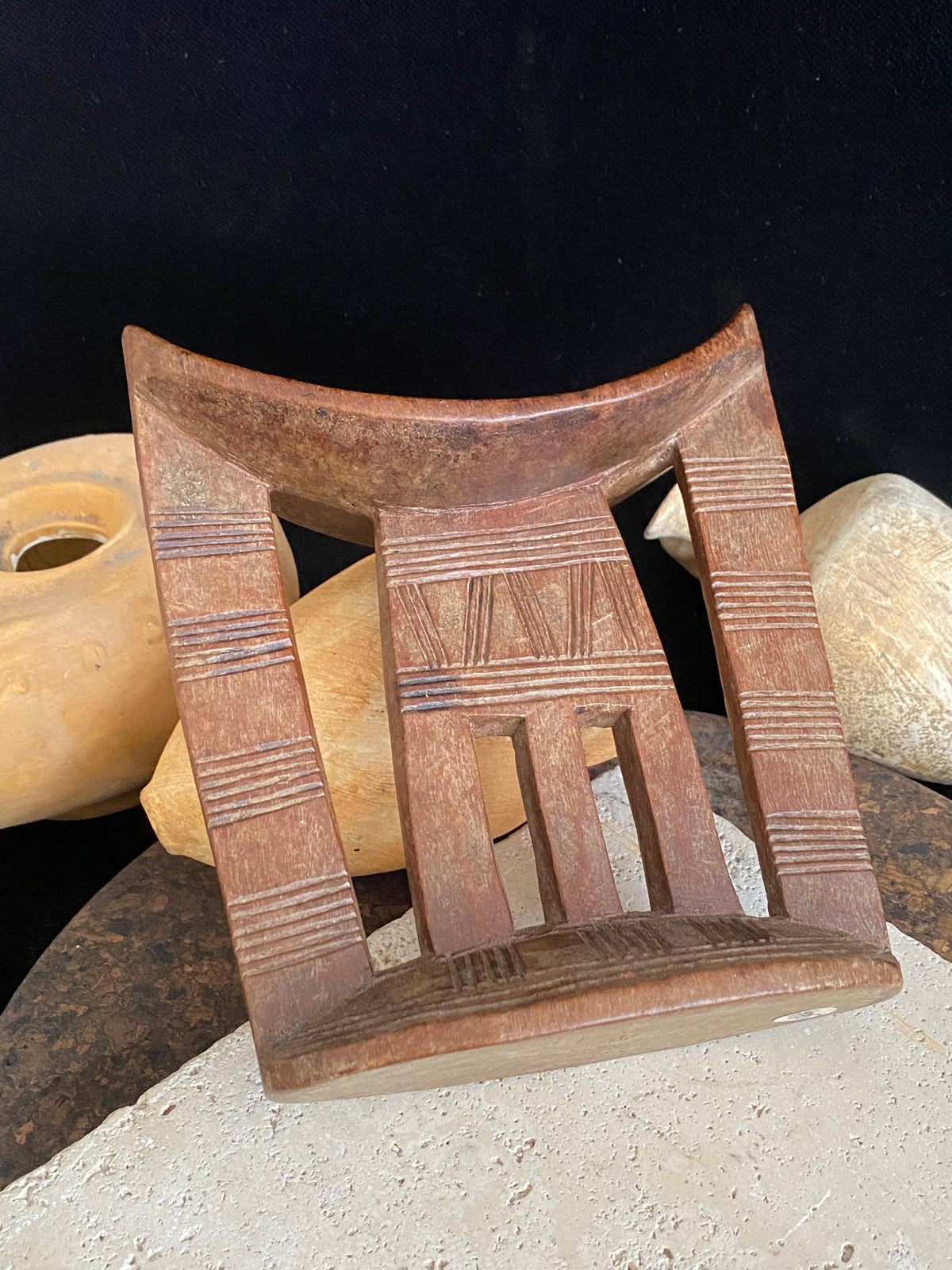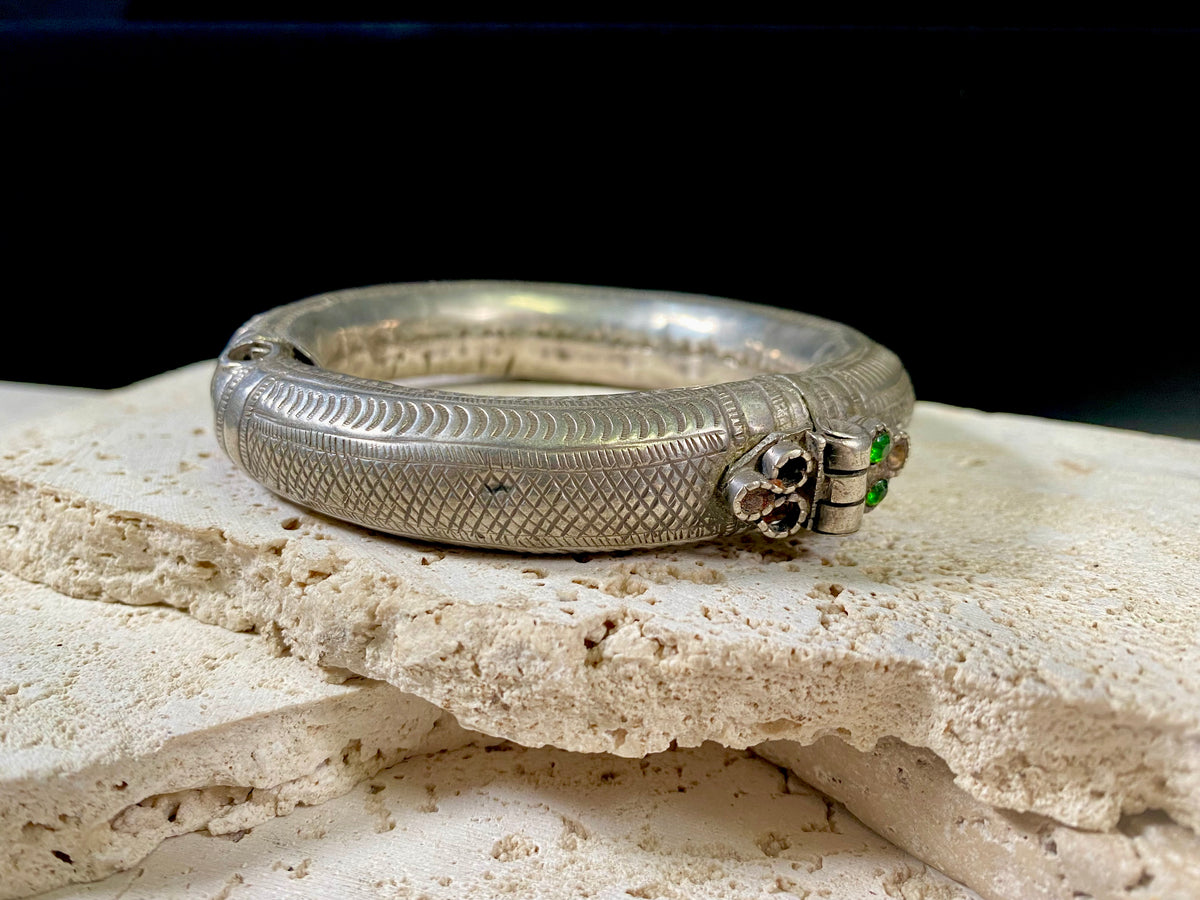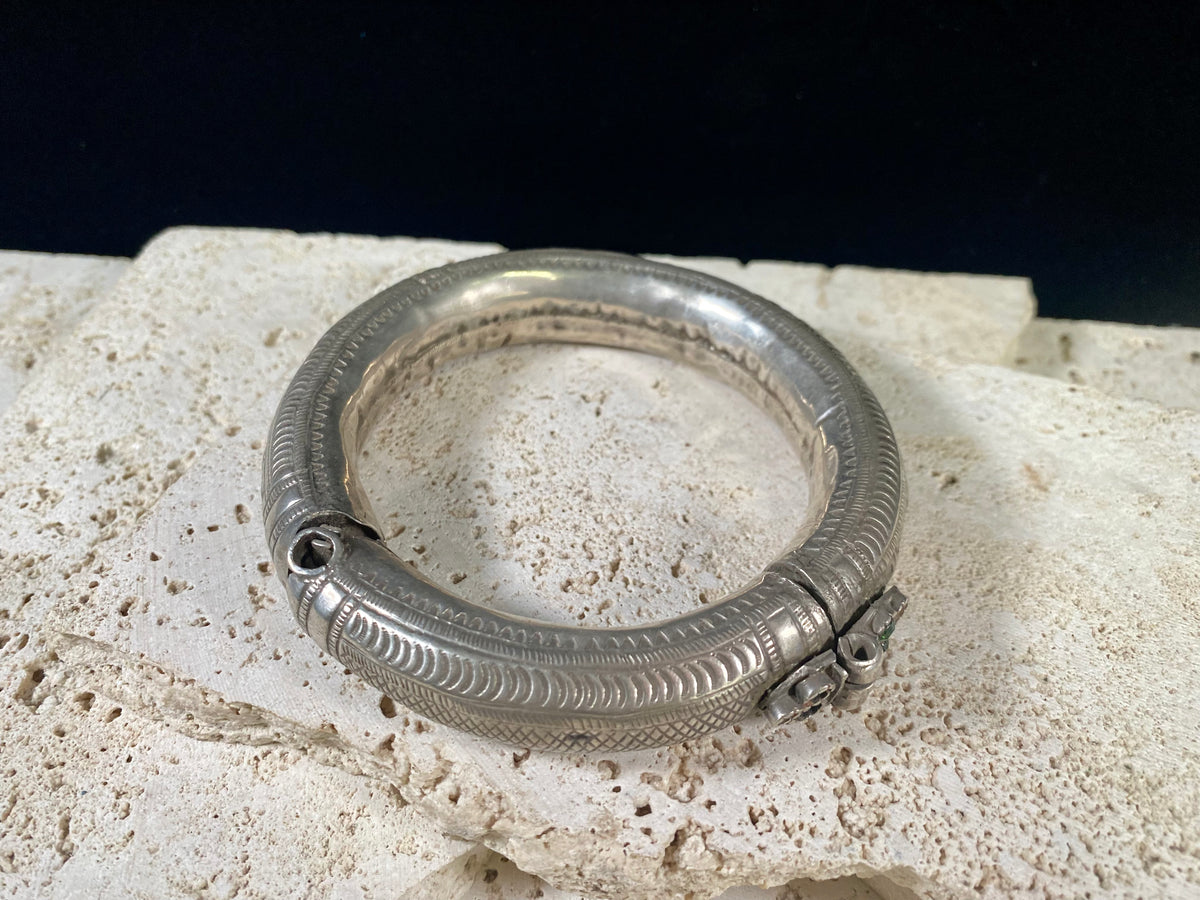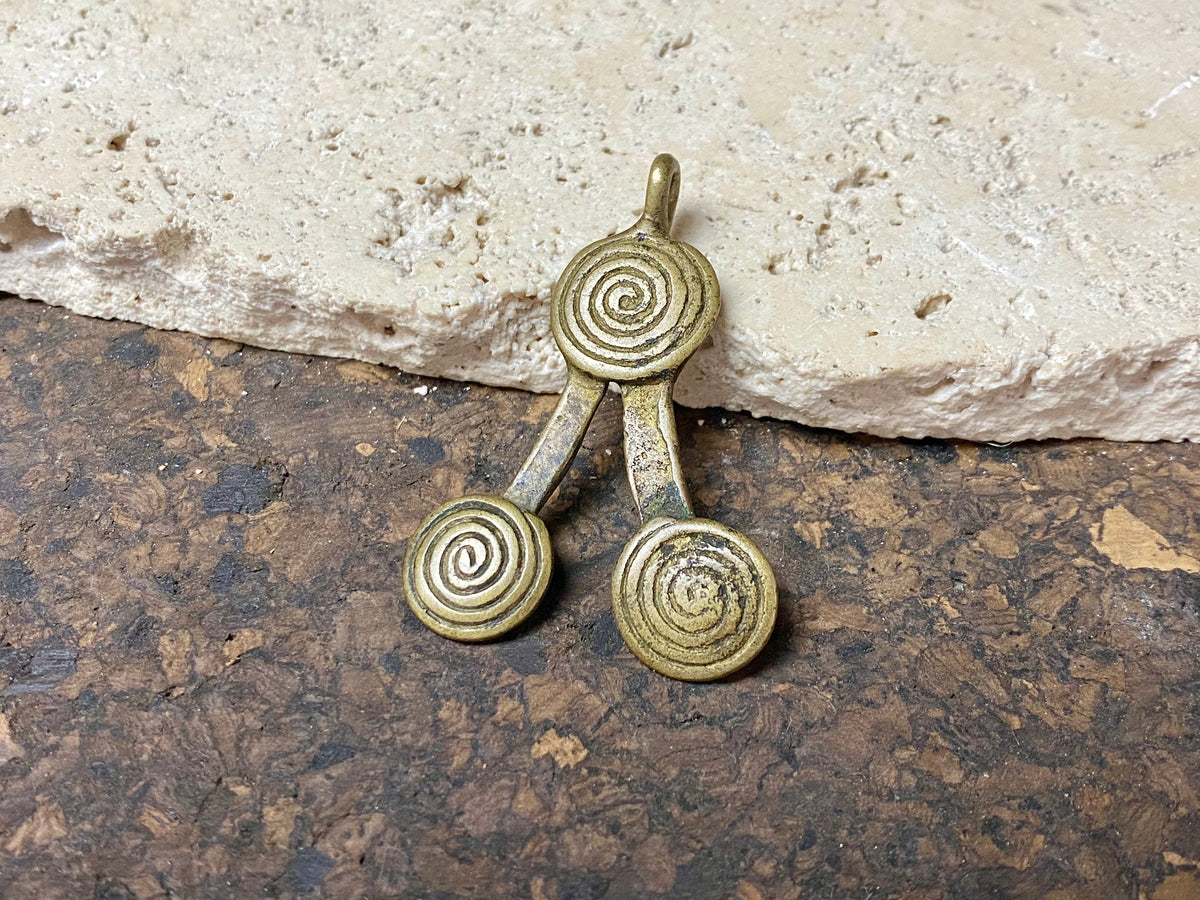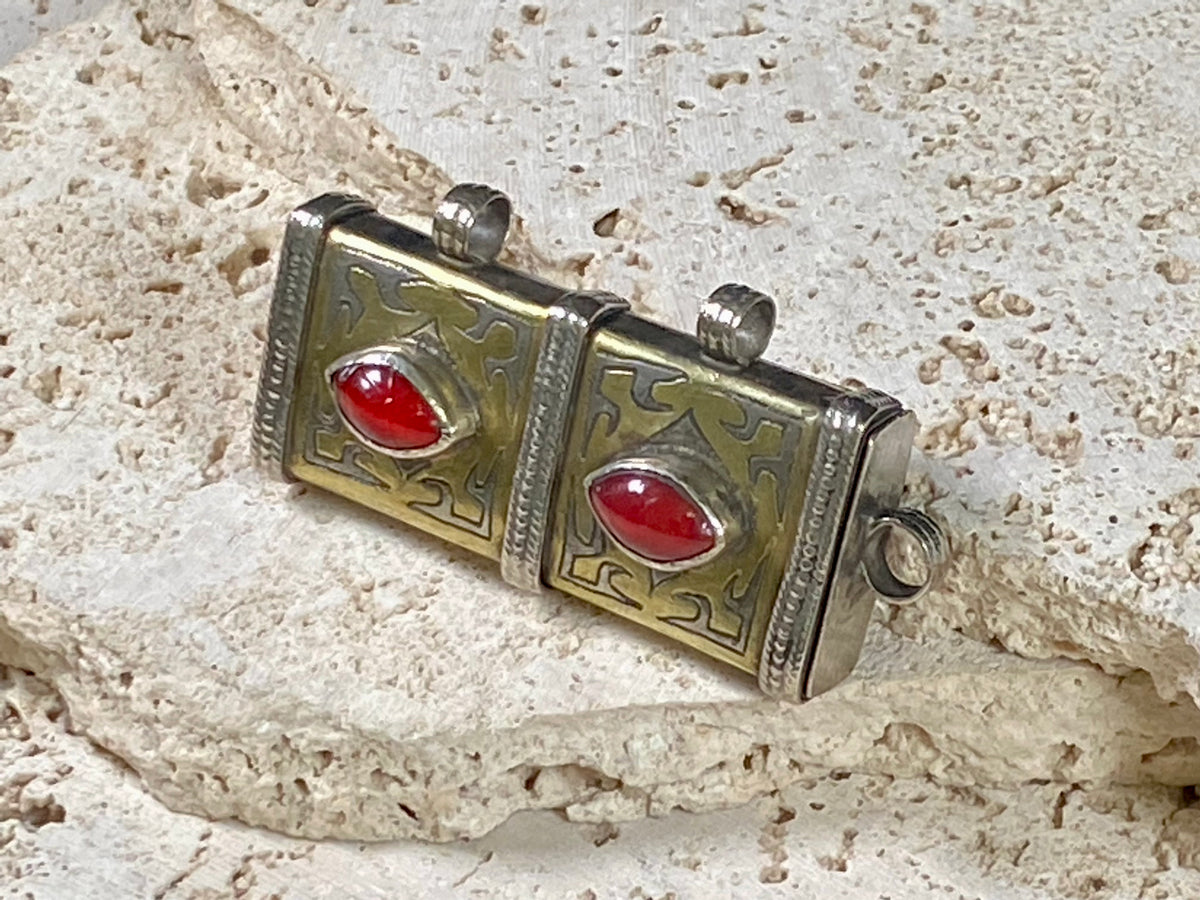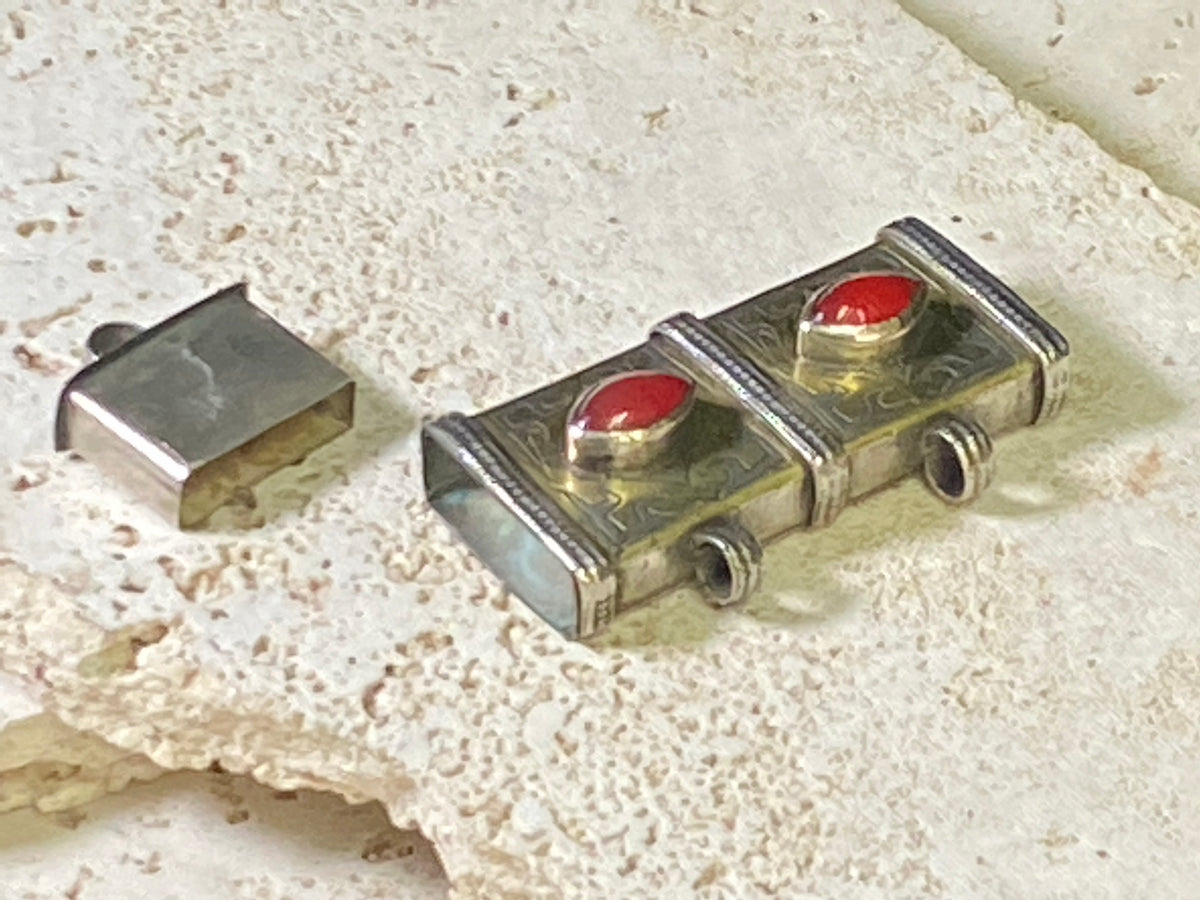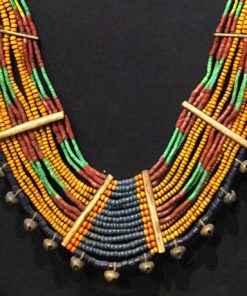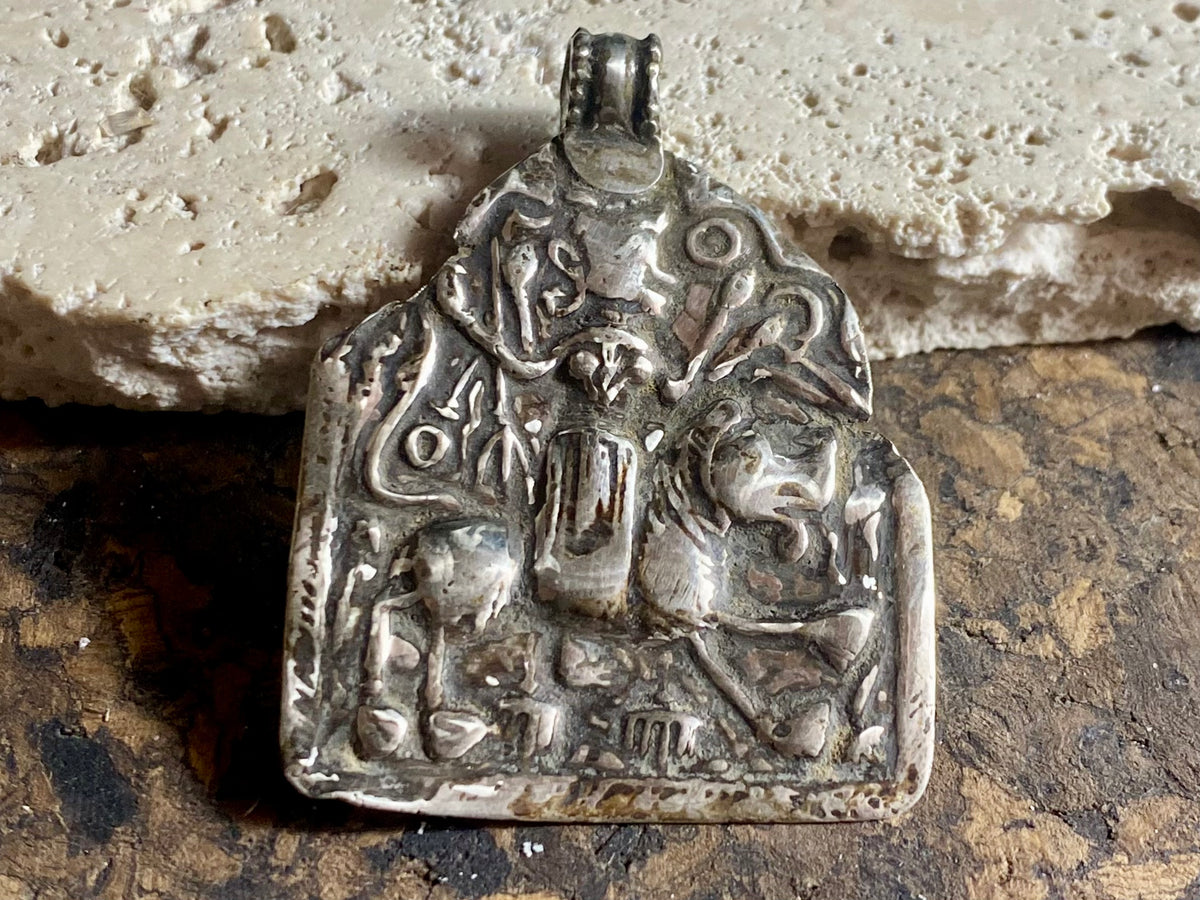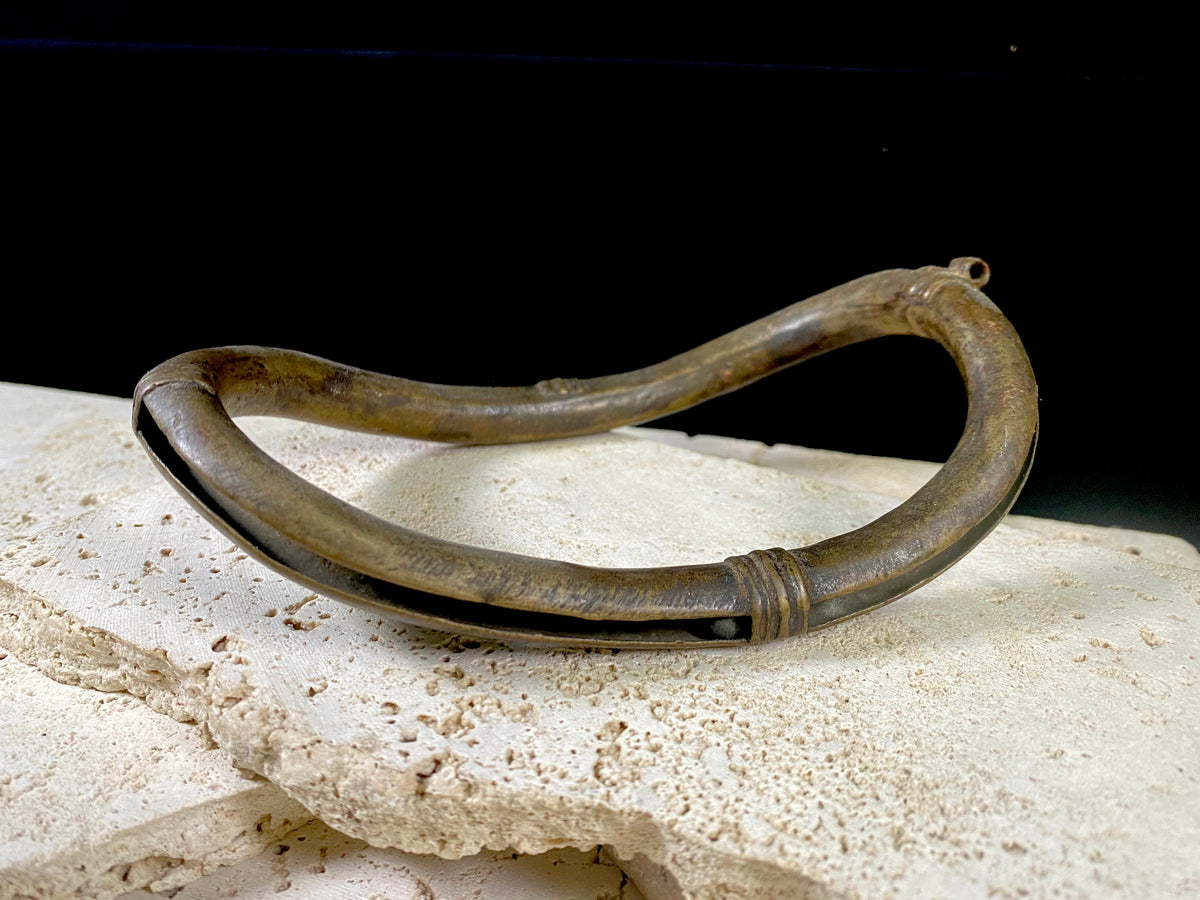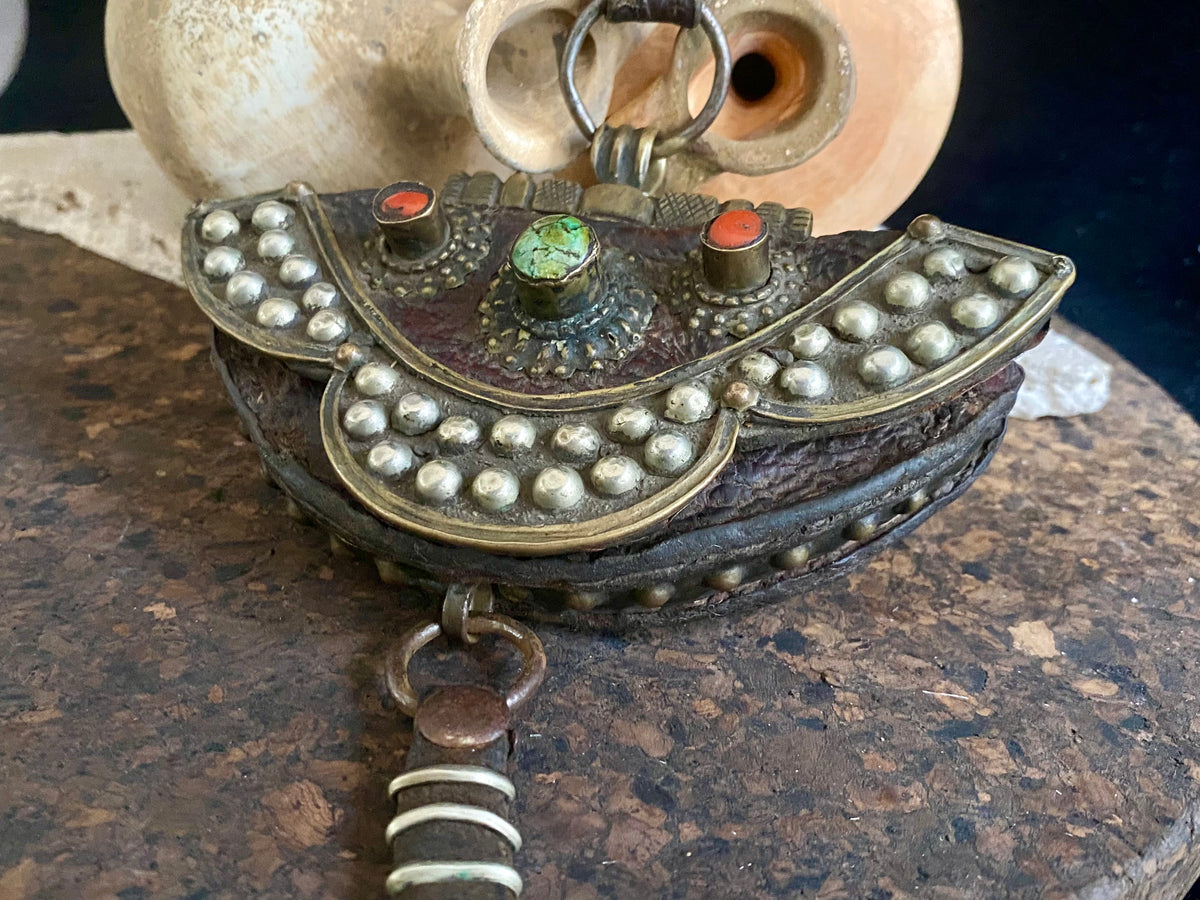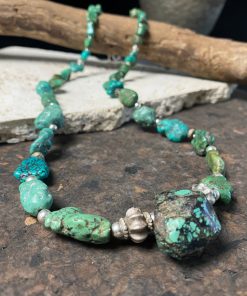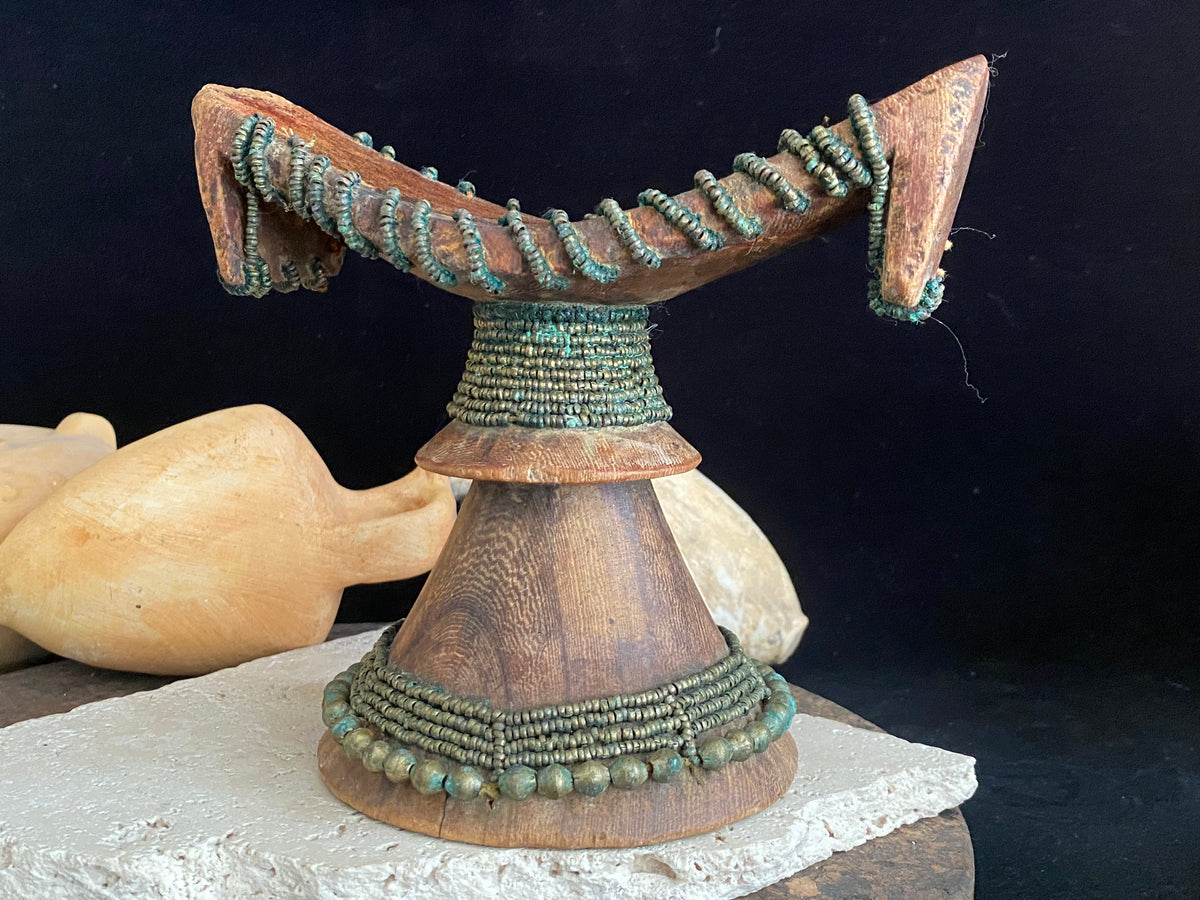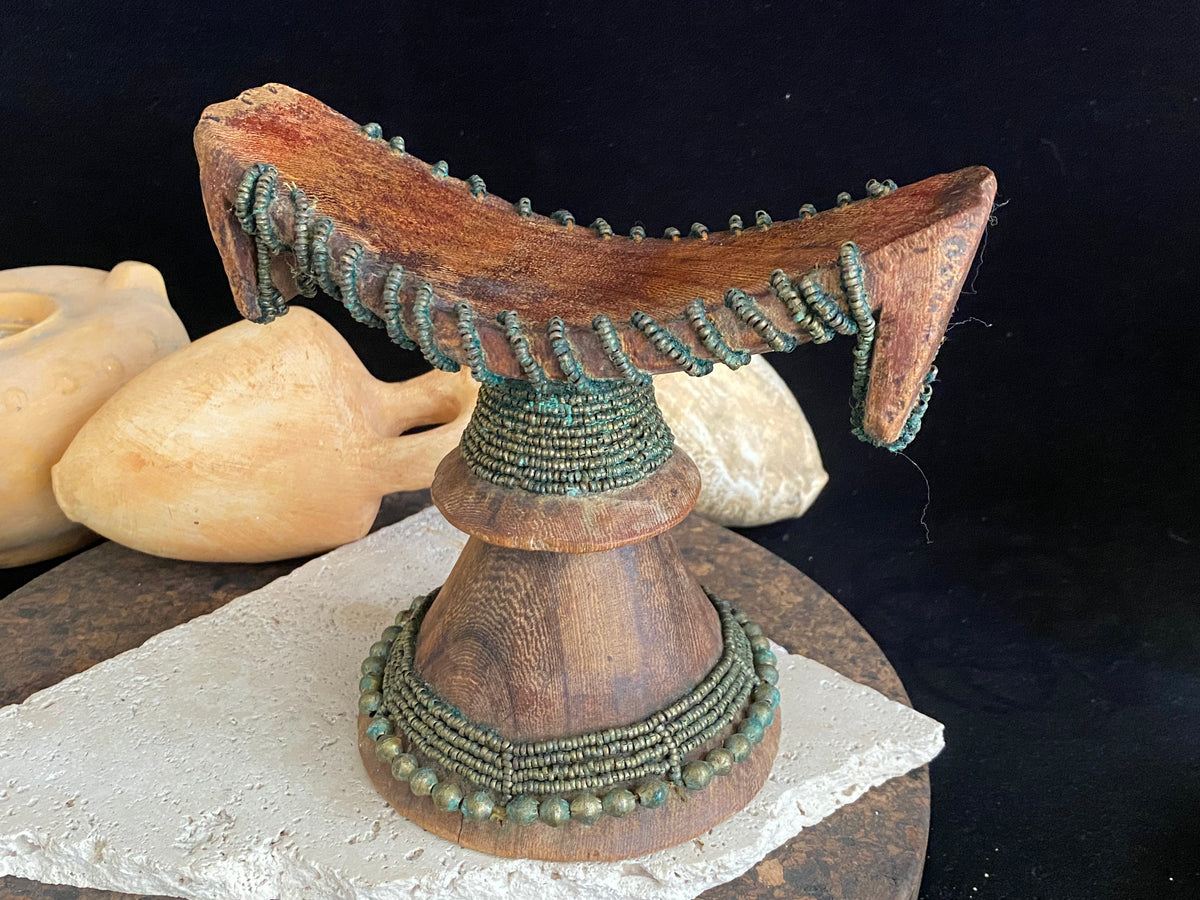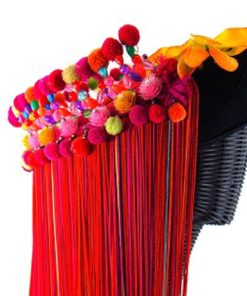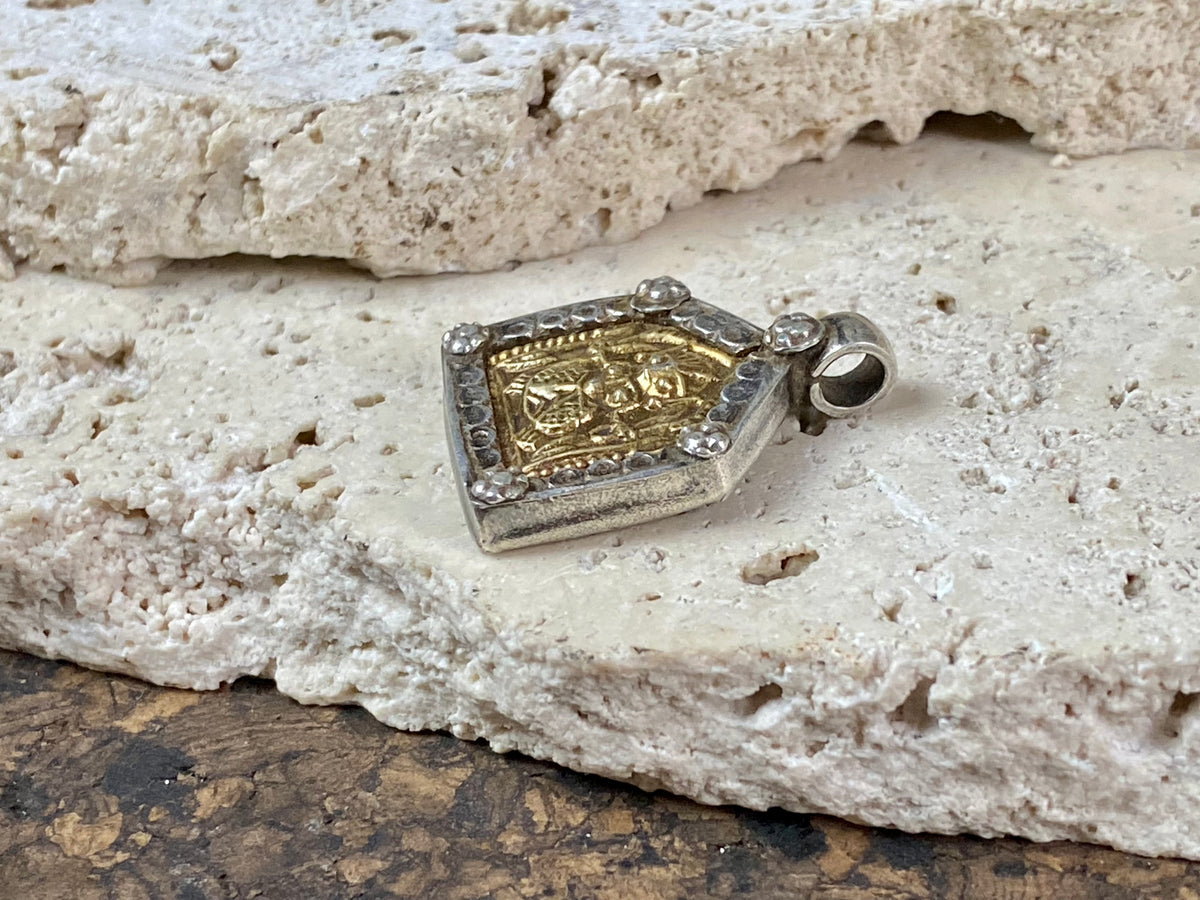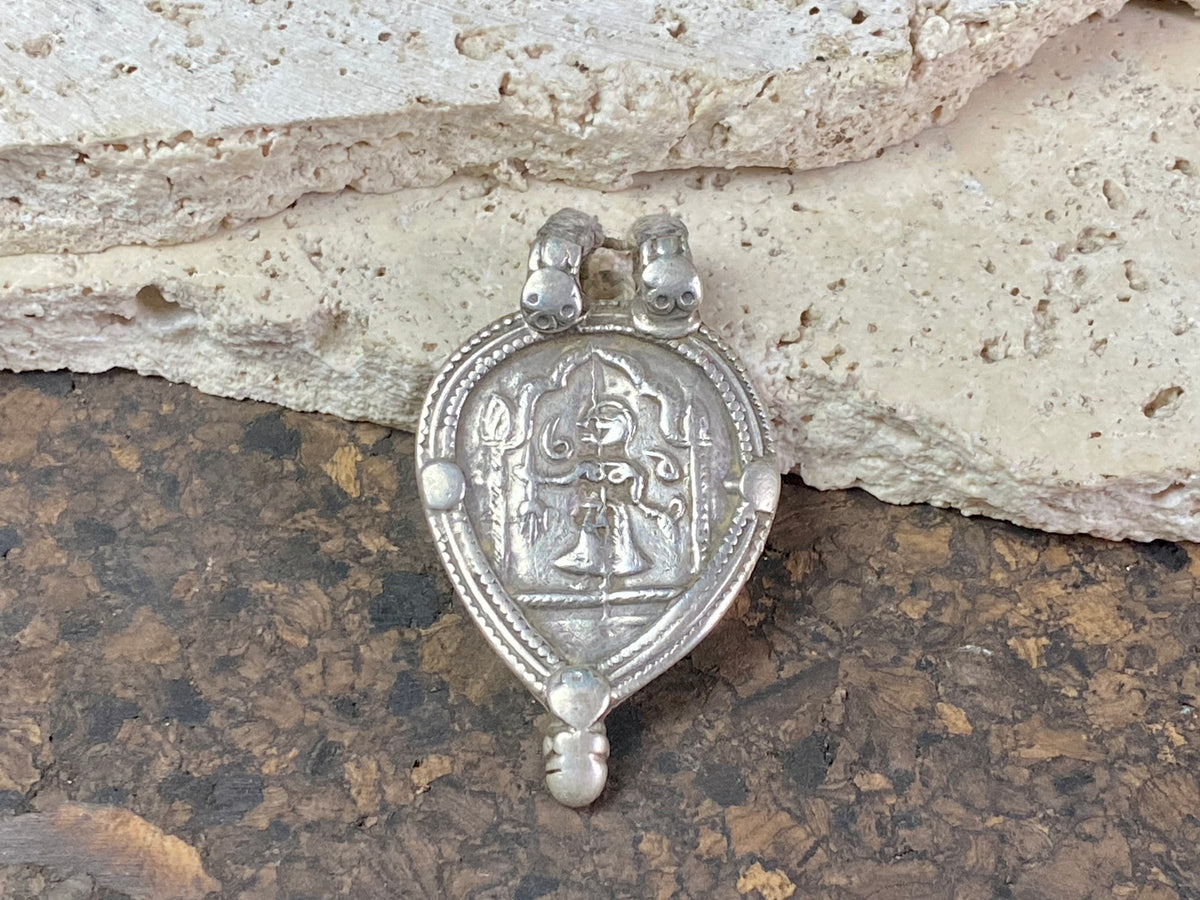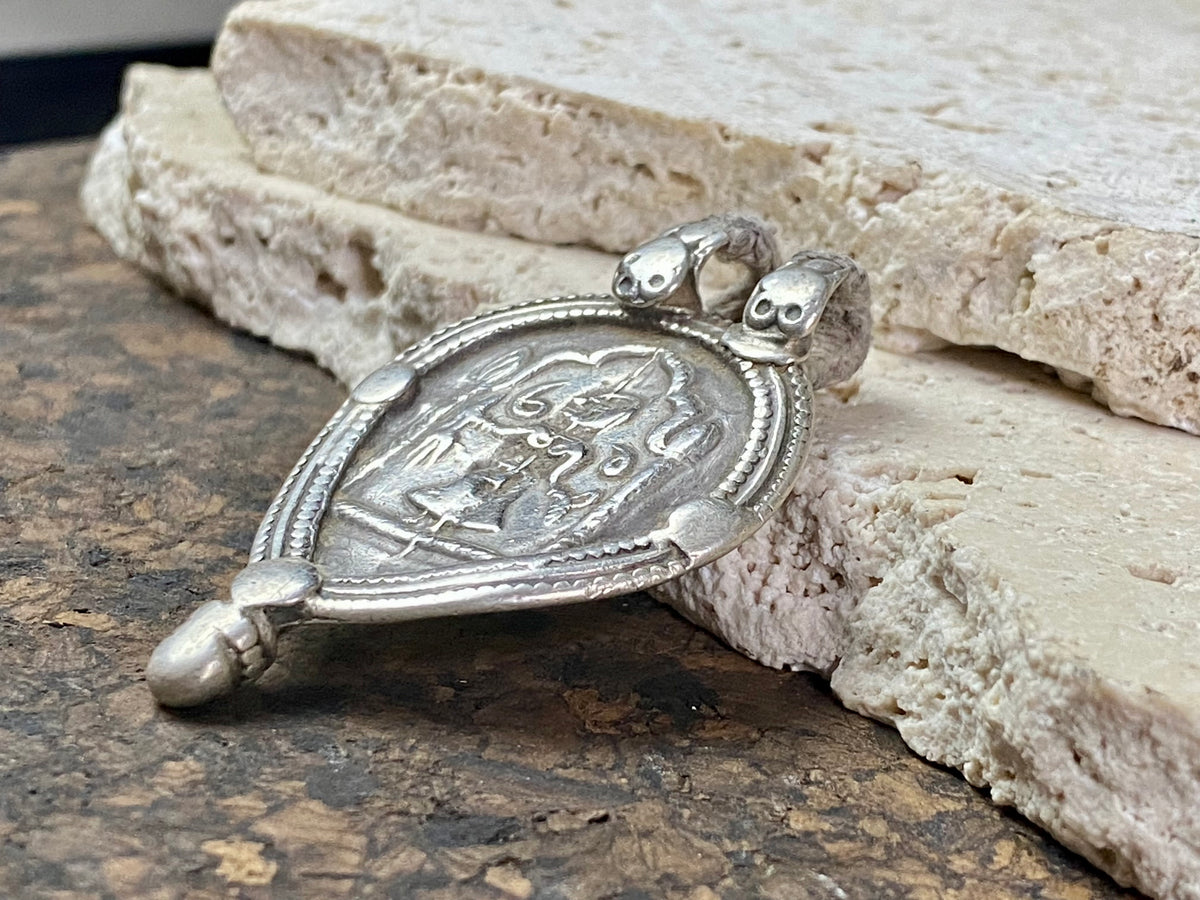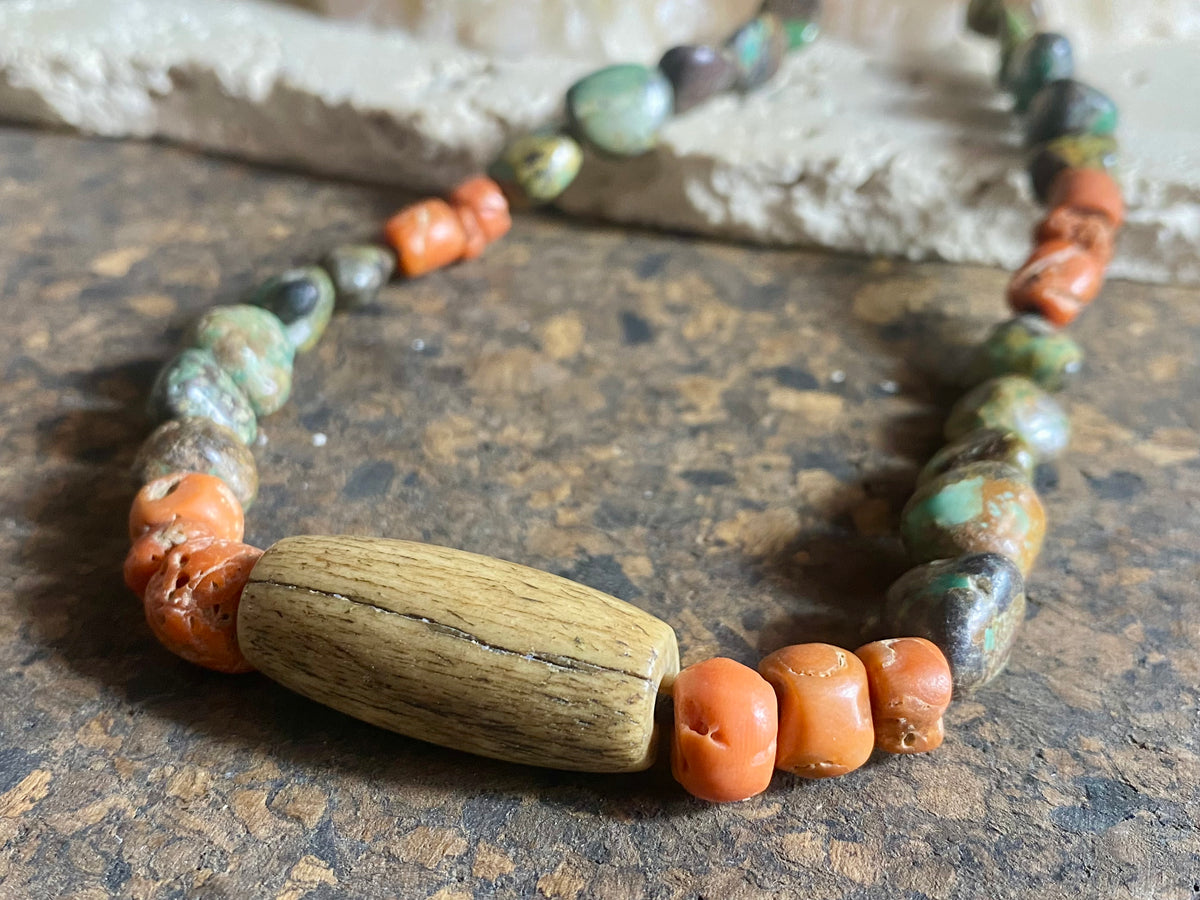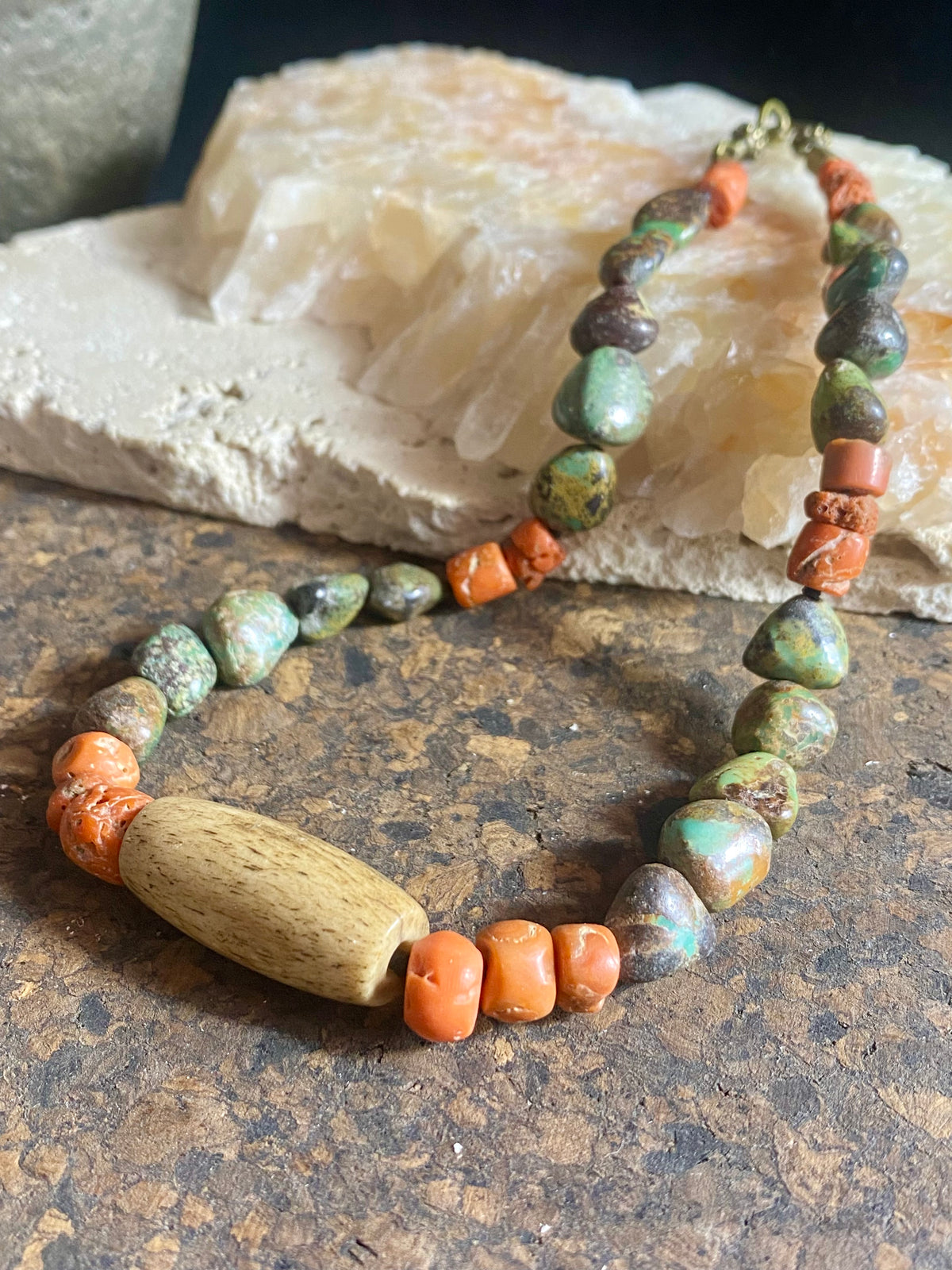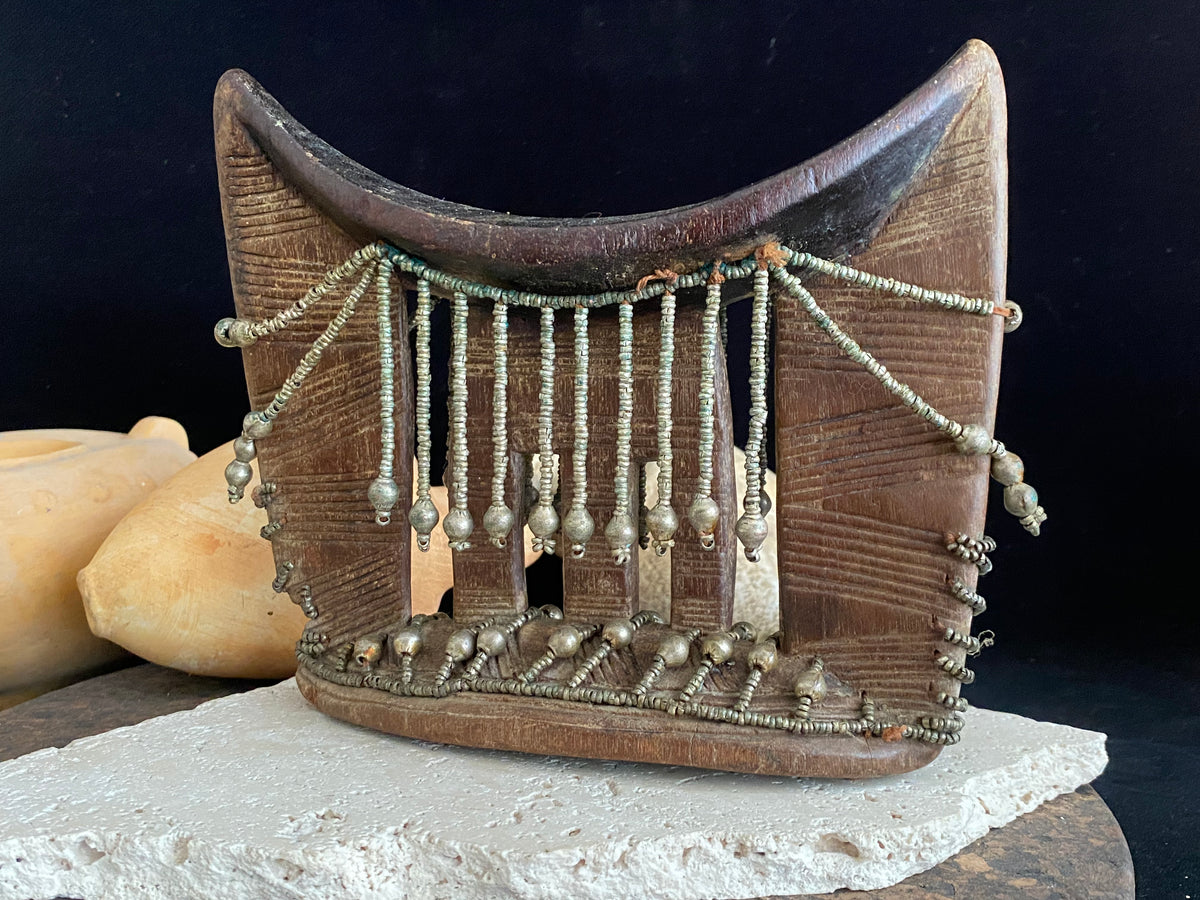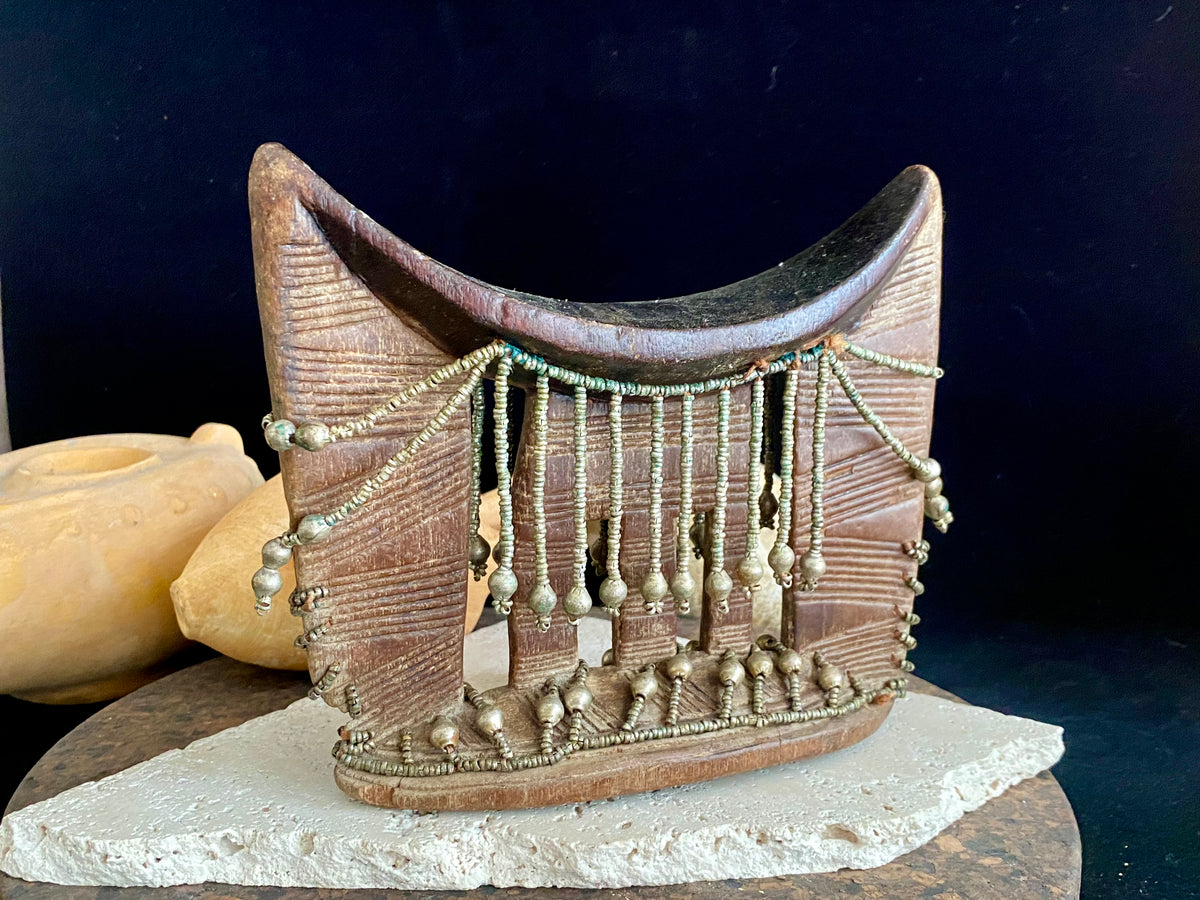Antique Copper Bronze Chhapa Temple Stamps Kashgar
$ 89,00 $ 44,50
The stamps bear symbols or scripts related to particular Hindu deities, usually Vishnu or Shiva. The top supportive structure often terminates in a pierced finial, allowing related stamps to be held together by the priests on a cord or ring. However, note that our oldest stamp has a simple toggle hold.
It is customary for Hindu temples in the east of India to mark the body of devotees with these stamps after the undertaking of a purifying bath, providing not only visual proof of devotion but to also transfer beneficence to the wearer. The stamps are dipped into a prepared white or red sandalwood paste, then applied to proscribed parts of the body such as the forehead, cheeks, shoulders, forearms and stomach.
Similar stamps are illustrated in Traditional Jewelry of India, Utracht, O., Thames & Hudson, 1997 (p. 26) and may also be seen on display in the collection of the British Museum.
| Stamp | Conch shell length 5 cm, Raised disk – 3 cm diameter, Flat disk with toggle – 3.2 cm diameter, Square – 2.5 cm x 2.5 cm |
|---|
Fast Shipping and Professional Packing
We offer a wide range of shipping options owing to our long-running partnerships with UPS, FedEx and DHL. Our warehouse staff is highly trained and will pack the goods according to our precise and exact specifications. Before shipping, all goods will be thoroughly examined and safely secured. We ship to thousands clients each day across multiple countries. This is a sign of our determination to become the biggest online retailer in the world. The warehouses and centers for distribution are in Europe, as well as the USA.
Orders that contain more than 1 item are assigned processing periods according to each item.
We will inspect each and every one of the products before they are shipped. Most orders are now shipped within 48 hrs. The time to deliver varies from 3-7 days.
Returns
The inventory is always changing and we cannot completely manage it because of the fact that multiple stakeholders are involved, including our warehouse and factory. The stock levels may fluctuate at any moment. Be aware that it is possible that your order will be out of stock after you've placed your order.
Our policy lasts thirty days. If it's been more than 30 days since the date you purchased your item and we're unable to offer you a complete refund or exchange.
You can only return an item if it is unused and still in the same condition when you first received it. It must also be returned in its original packaging.
Related products
Tribal Textiles
Tribal Textiles
Tribal Jewellery
Tribal Jewellery
Pendants
Tribal Jewellery
Tribal Jewellery
Pendants
Tribal Textiles
Rongao Vietnamese Tribal Vintage Hand Woven Loin Cloth Kashgar
Tribal Jewellery
Tribal Jewellery
Pendants
Tribal Jewellery
Tribal Jewellery
Adornment
Headdresses
Pendants
Pendants
Beaded Necklaces
